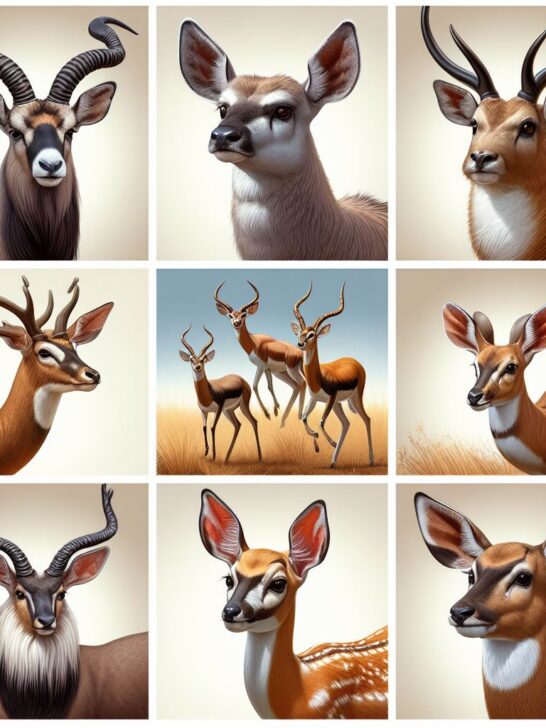Deer are fascinating creatures known for their graceful movements, majestic antlers, and gentle demeanor. However, there are several other animals that share similarities with deer in appearance or behavior, despite belonging to different taxonomic families. In this comprehensive guide, we will explore each of these animals, highlighting their unique characteristics, habitats, and behaviors. From the iconic pronghorn to the elusive pygmy brocket, each species offers a glimpse into the diverse world of deer-like creatures.
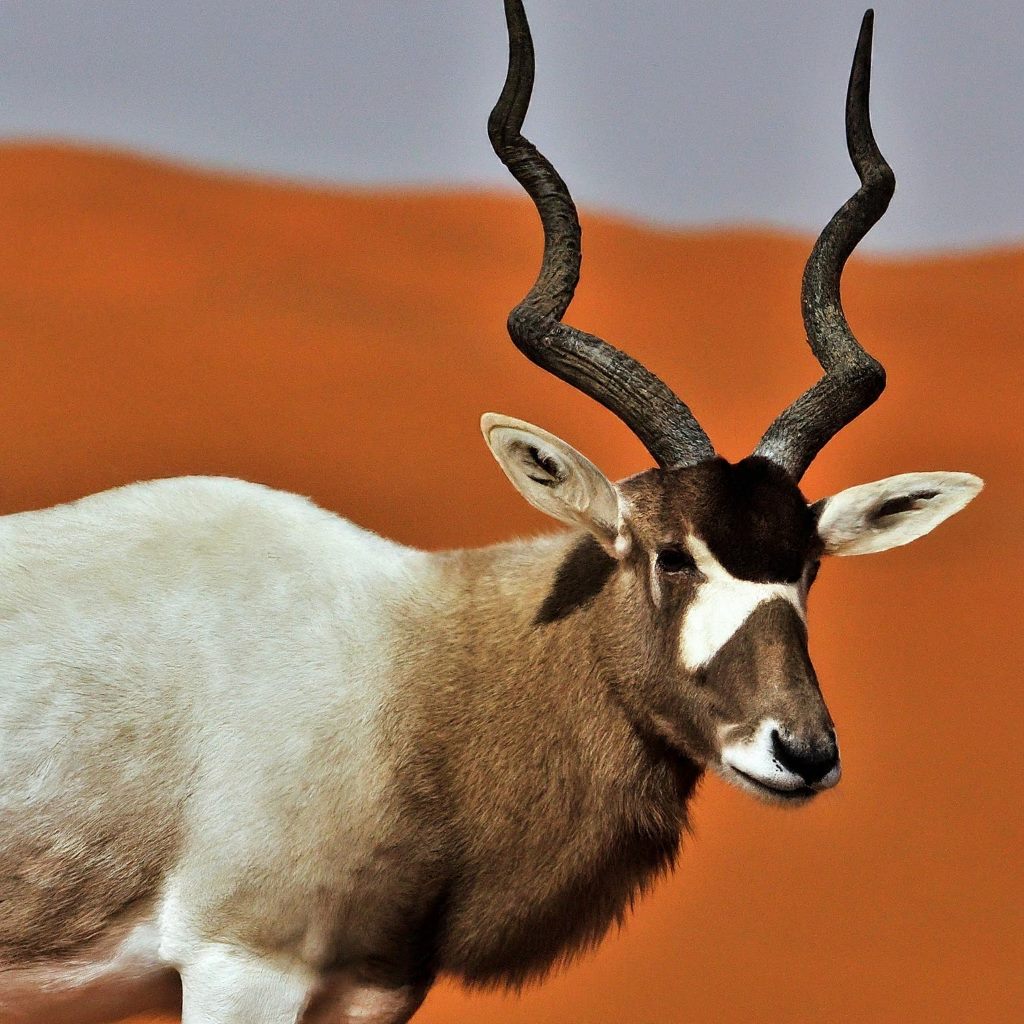
1. Addax (Addax nasomaculatus)
The Addax, also known as the white antelope, is a species of antelope native to the Sahara Desert. It is characterized by its distinctive white coat, which helps to reflect sunlight and regulate body temperature in the harsh desert environment. The Addax has long, spiral horns that curve backward, reminiscent of those found on certain deer species. Despite its desert habitat, the Addax is adapted to withstand extreme temperatures and can go for long periods without water by extracting moisture from plants.
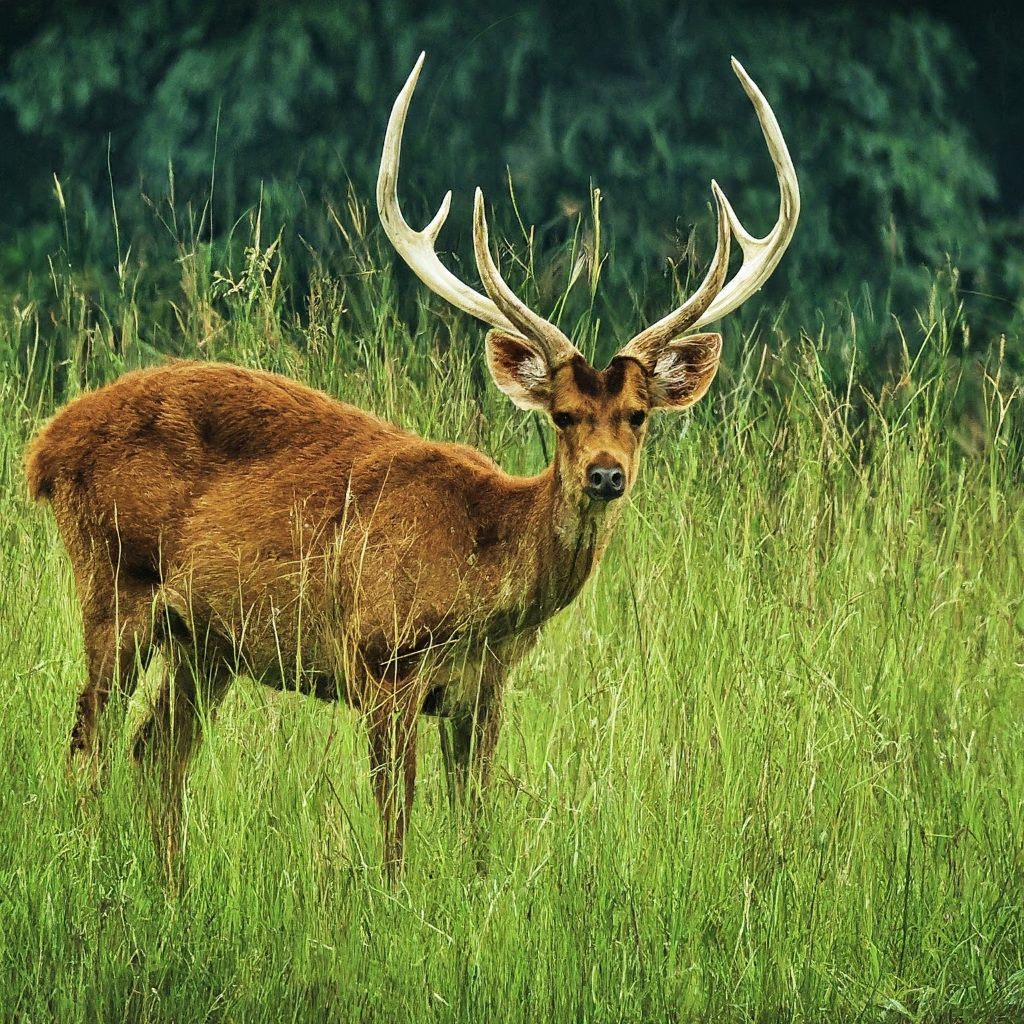
2. Barasingha (Rucervus duvaucelii)
The Barasingha, also known as the swamp deer, is a species of deer found in the Indian subcontinent. It is recognized for its impressive antlers, which can have up to 12 points, resembling the branches of a tree. The Barasingha’s coat varies in color from light brown to reddish-brown, with white spots scattered across its body. It inhabits wetlands and marshy areas, where it feeds on aquatic plants, grasses, and shrubs. Despite being a large herbivore, the Barasingha is relatively shy and elusive, preferring to avoid human disturbance.
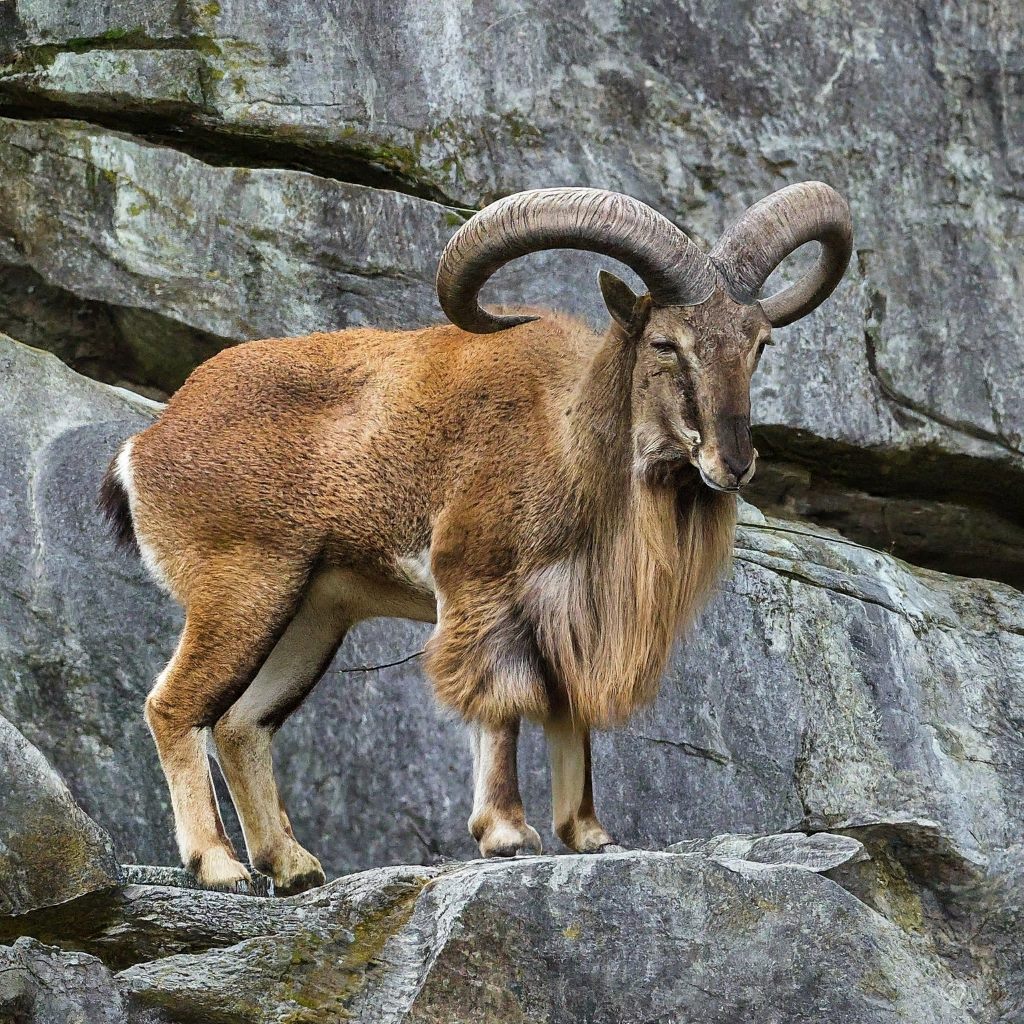
3. Bharal (Pseudois nayaur)
The Bharal, also known as the blue sheep or Himalayan tahr, is a species of wild sheep found in the mountainous regions of Central Asia. Despite its name, the Bharal is more closely related to goats than sheep. It is characterized by its thick, bluish-gray coat, which provides insulation against the cold temperatures of its high-altitude habitat. The Bharal has short, curved horns that sweep backward, similar to those of certain deer species. It is well adapted to life in rugged terrain, where it grazes on grasses, herbs, and shrubs.
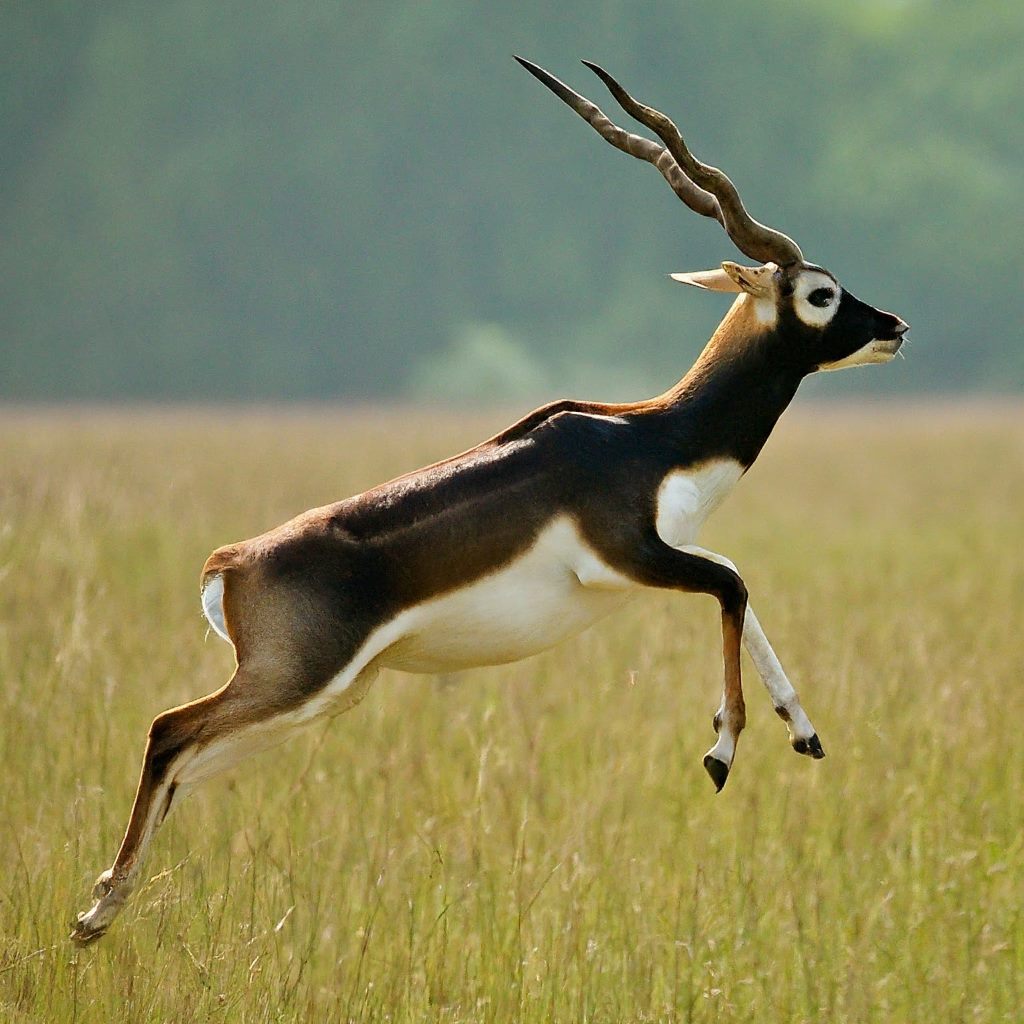
4. Blackbuck (Antilope cervicapra)
The Blackbuck is a species of antelope native to the Indian subcontinent. It is recognized for its striking appearance, with a glossy black coat and contrasting white markings on its face, throat, and belly. The male Blackbuck is adorned with long, spiral horns that curve backward, resembling those of certain deer species. Blackbucks inhabit grasslands and open woodlands, where they graze on a variety of grasses, herbs, and shrubs. They are known for their agility and speed, capable of reaching impressive speeds when fleeing from predators.
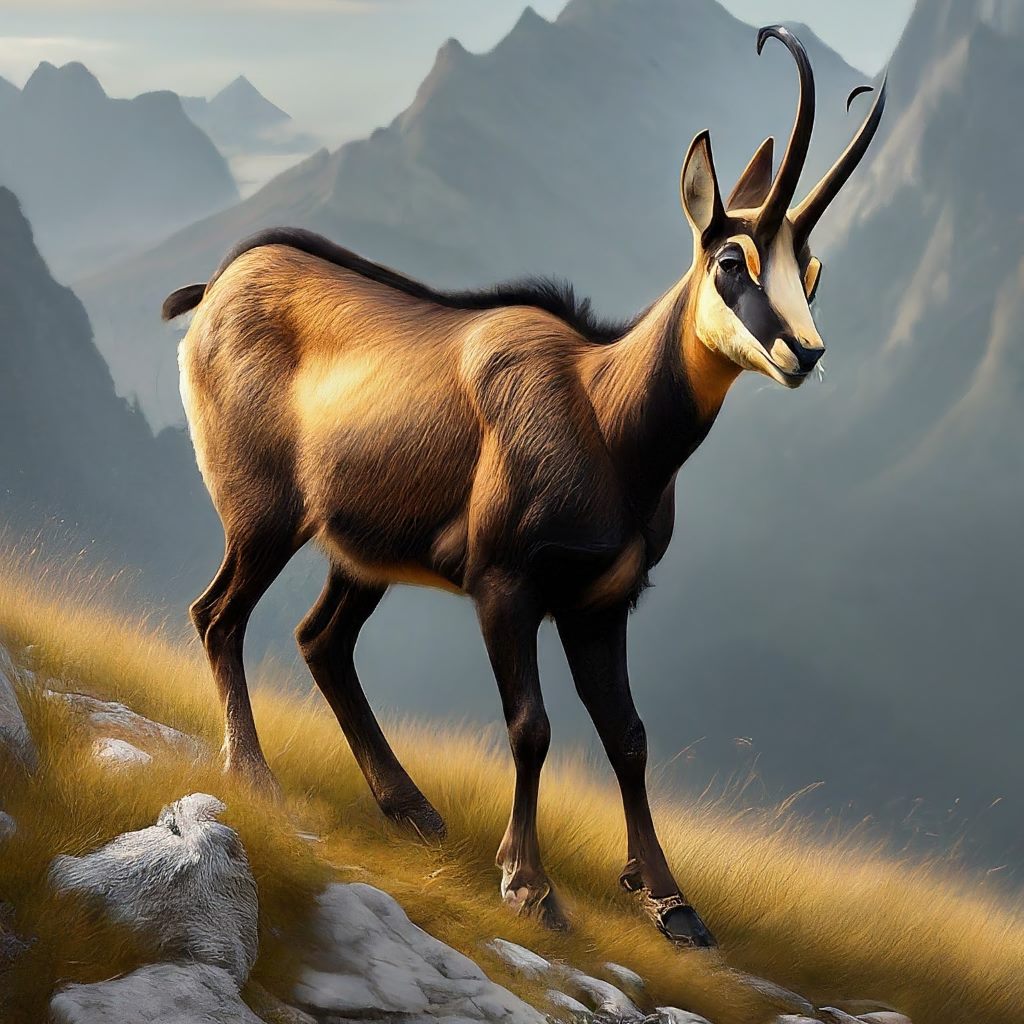
5. Chamois Colored Goat
The Chamois Colored Goat, also known simply as the chamois, is a species of mountain goat found in the European Alps. It is recognized for its distinctive coat, which varies in color from reddish-brown to grayish-brown, resembling the coloration of the chamois antelope. The Chamois Colored Goat has short, curved horns that sweep backward, similar to those of certain deer species. It is well adapted to life in rugged mountain terrain, where it climbs steep slopes with ease in search of food. The chamois primarily feeds on grasses, herbs, and shrubs found at high altitudes.
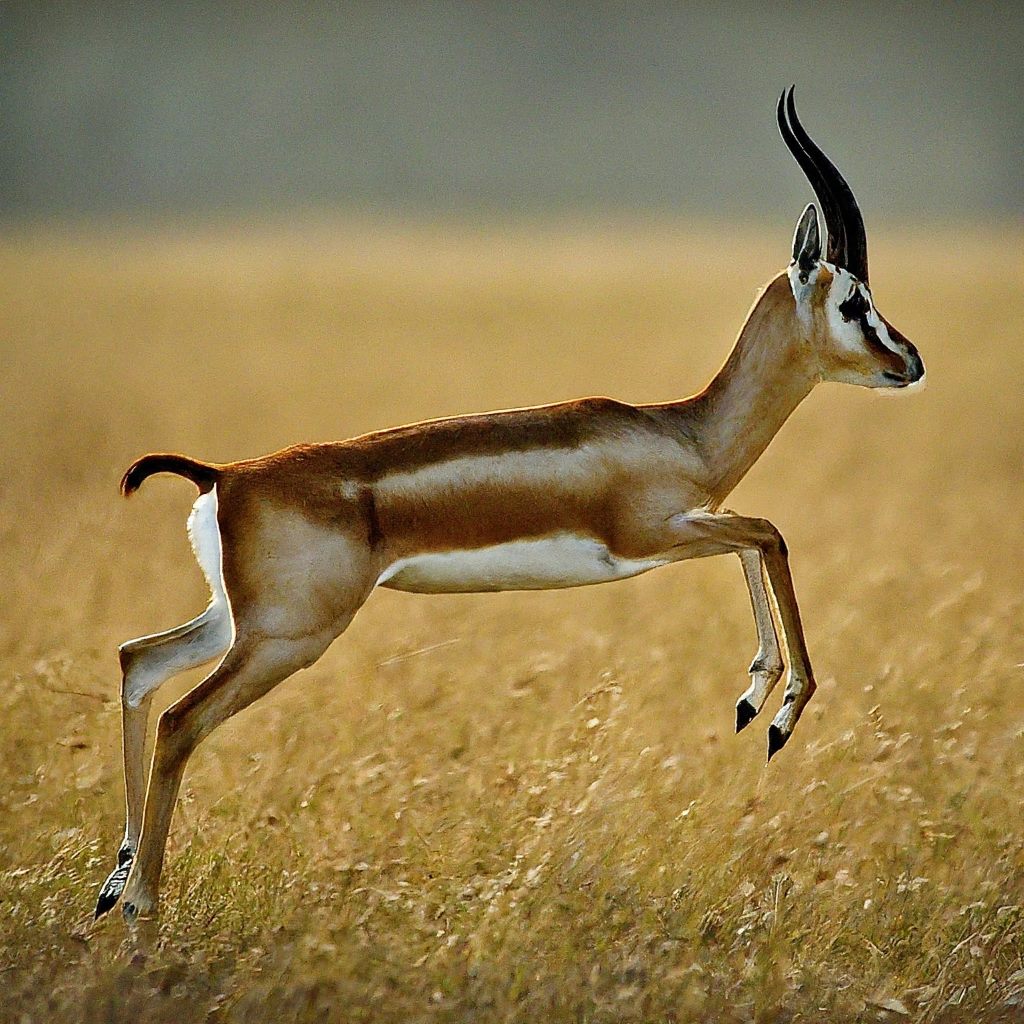
6. Chinkara (Gazella bennettii)
The Chinkara, also known as the Indian gazelle, is a species of gazelle found in the Indian subcontinent. It is recognized for its slender build, sandy-colored coat, and distinctive facial markings. The Chinkara has long, slender horns that curve backward, reminiscent of those found on certain deer species. It inhabits arid and semi-arid habitats, including grasslands, scrublands, and deserts, where it feeds on a variety of grasses, herbs, and shrubs. Despite facing threats from habitat loss and poaching, the Chinkara is known for its resilience and adaptability.
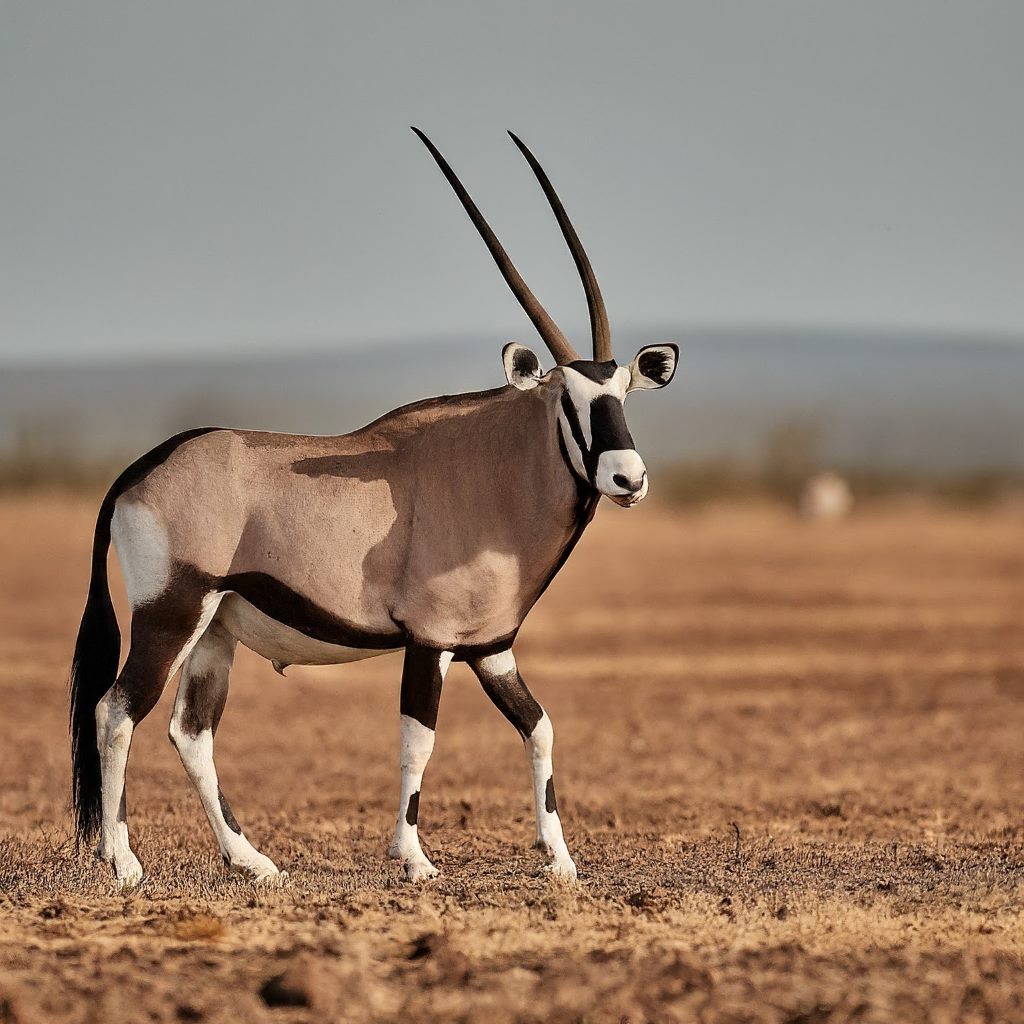
7. Gemsbok (Oryx gazella)
The Gemsbok is a species of antelope found in the arid regions of Southern Africa. It is recognized for its striking appearance, with a grayish-brown coat, contrasting black and white markings on its face and legs, and long, straight horns that extend backward. The Gemsbok’s horns are often compared to those of certain deer species due to their impressive size and shape. It inhabits deserts, savannas, and scrublands, where it feeds on grasses, herbs, and succulent plants. The Gemsbok is well adapted to arid environments, capable of surviving extended periods without water.
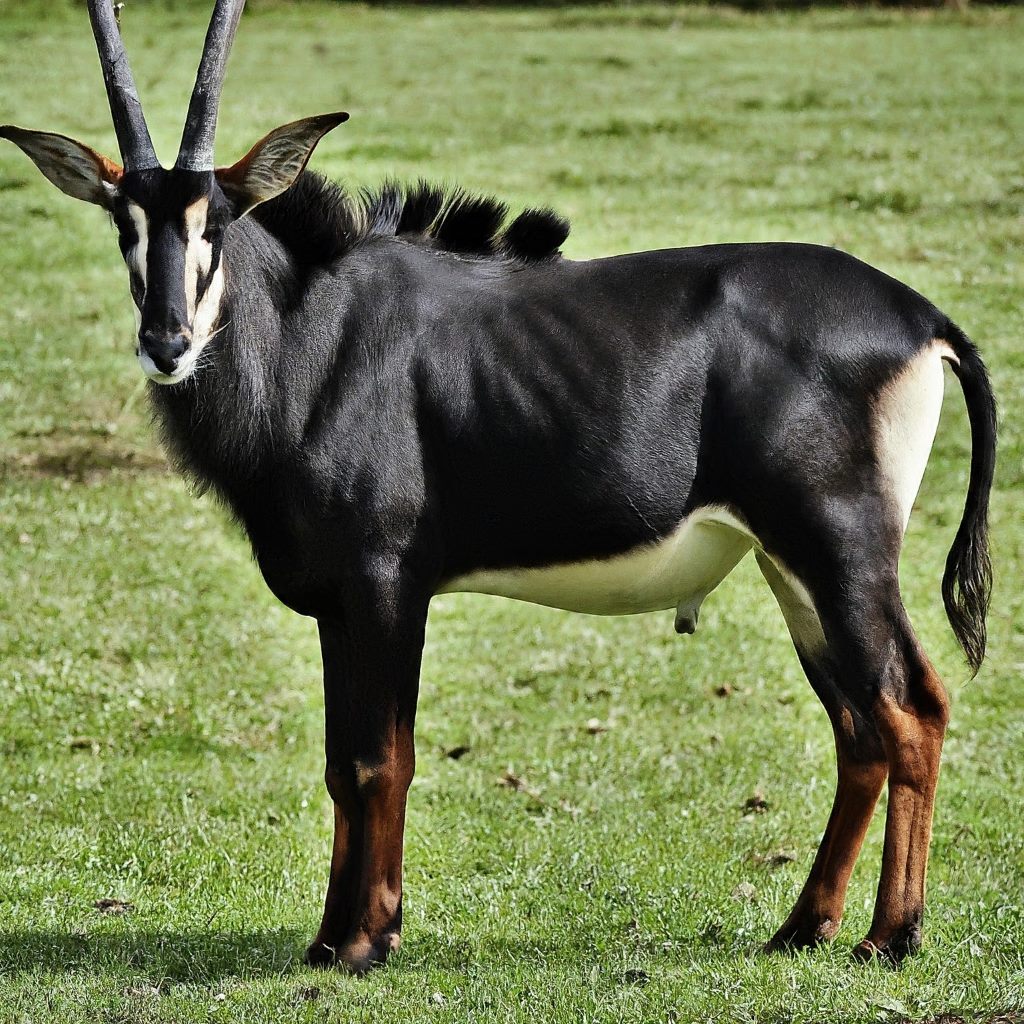
8. Giant Sable (Hippotragus niger variani)
The Giant Sable, also known as the Angola sable, is a subspecies of sable antelope found in Angola. It is recognized for its dark brown coat, contrasting white markings on its face and belly, and long, curved horns that sweep backward. The Giant Sable’s horns are reminiscent of those found on certain deer species due to their elegant curvature. It inhabits dense woodlands and savannas, where it feeds on grasses, leaves, and shrubs. Despite being a symbol of Angola’s national pride, the Giant Sable is critically endangered due to habitat loss and poaching.
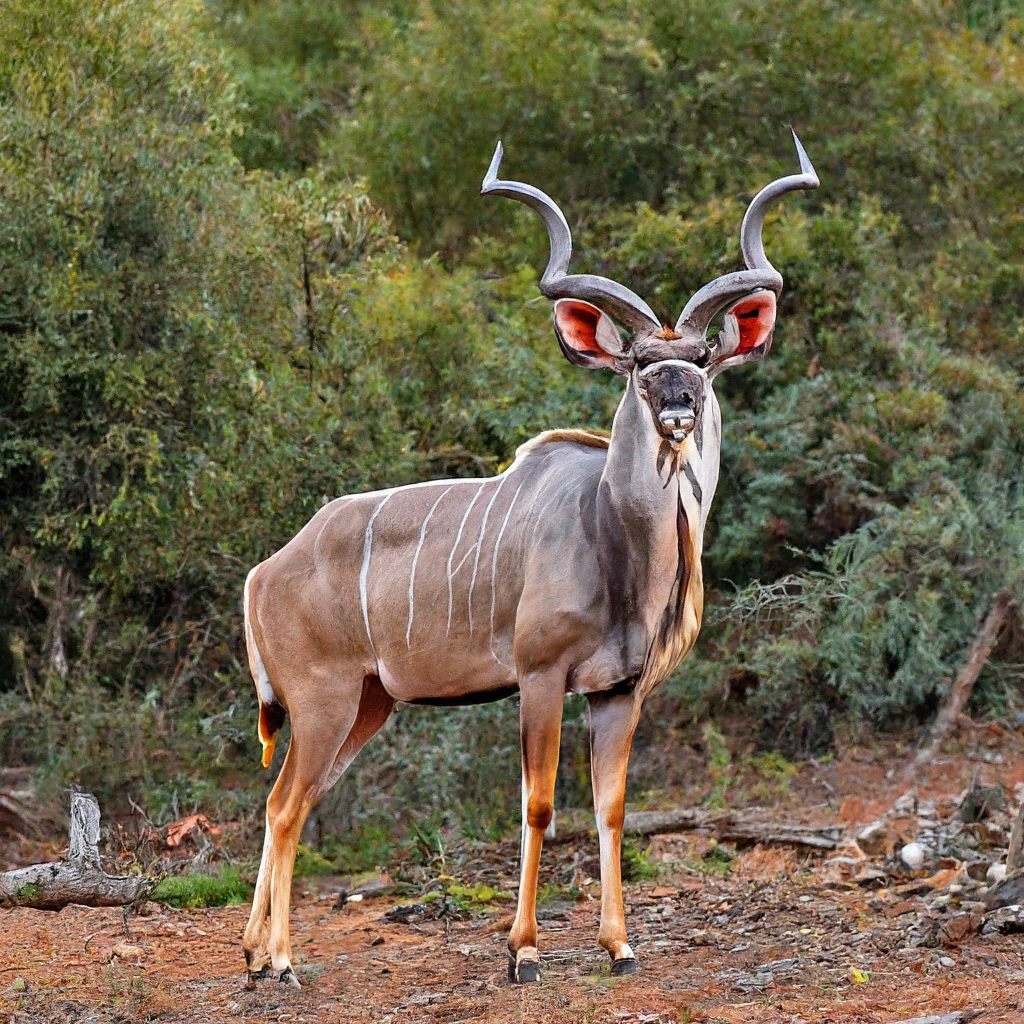
9. Greater Kudu (Tragelaphus strepsiceros)
The Greater Kudu is a species of antelope found in eastern and southern Africa. It is recognized for its distinctive coat, with thin white stripes running along its sides and a conspicuous white chevron between its eyes. The male Greater Kudu is adorned with long, spiral horns that can reach impressive lengths, resembling those of certain deer species. It inhabits a variety of habitats, including woodlands, scrublands, and savannas, where it feeds on leaves, shoots, and fruits. The Greater Kudu is known for its agility and ability to navigate dense vegetation with ease.
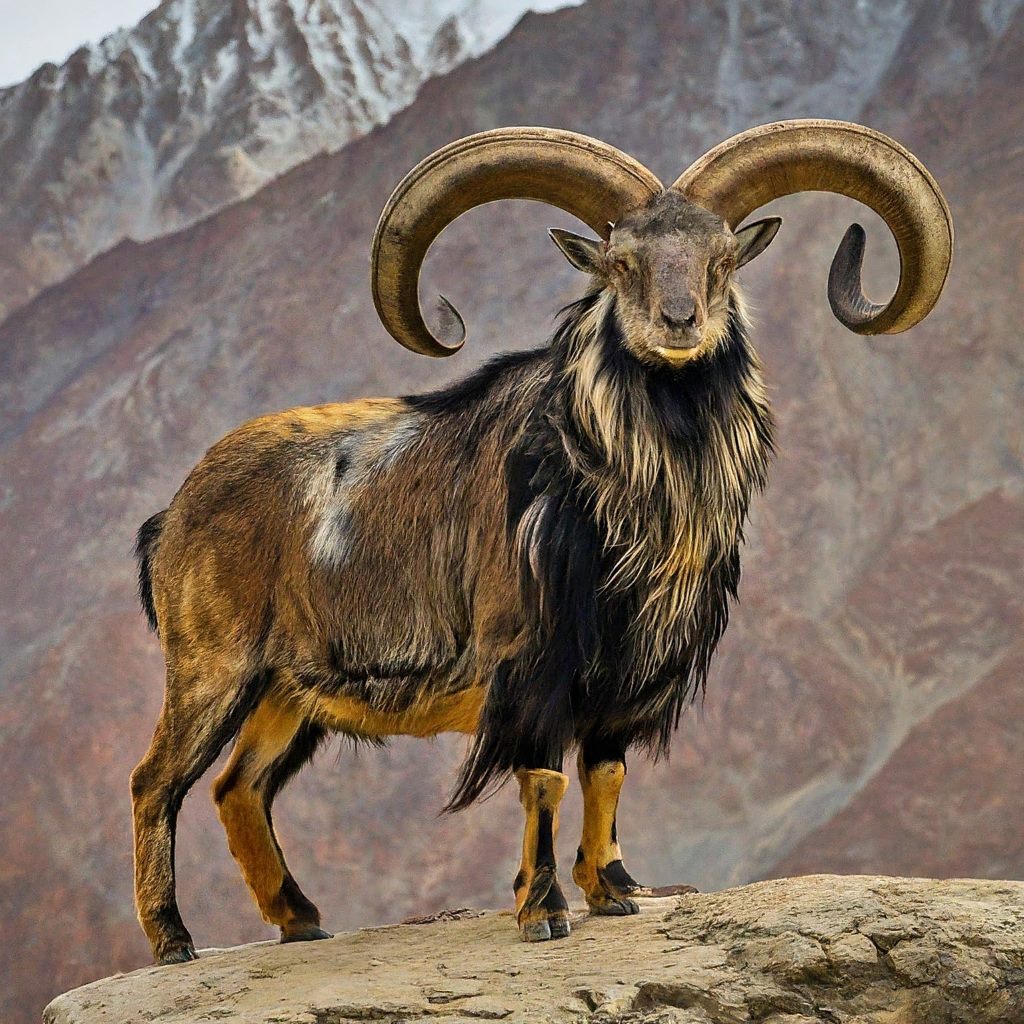
10. Ladakh Urial
The Ladakh Urial is a subspecies of wild sheep found in the high-altitude regions of Central Asia, particularly in Ladakh, India. It is recognized for its thick, reddish-brown coat, which provides insulation against the cold temperatures of its mountainous habitat. The Ladakh Urial has long, curved horns that sweep backward, resembling those of certain deer species. It inhabits rocky slopes and alpine meadows, where it grazes on grasses, herbs, and shrubs. The Ladakh Urial is well adapted to life in rugged terrain, capable of traversing steep cliffs and cliffs in search of food and shelter.
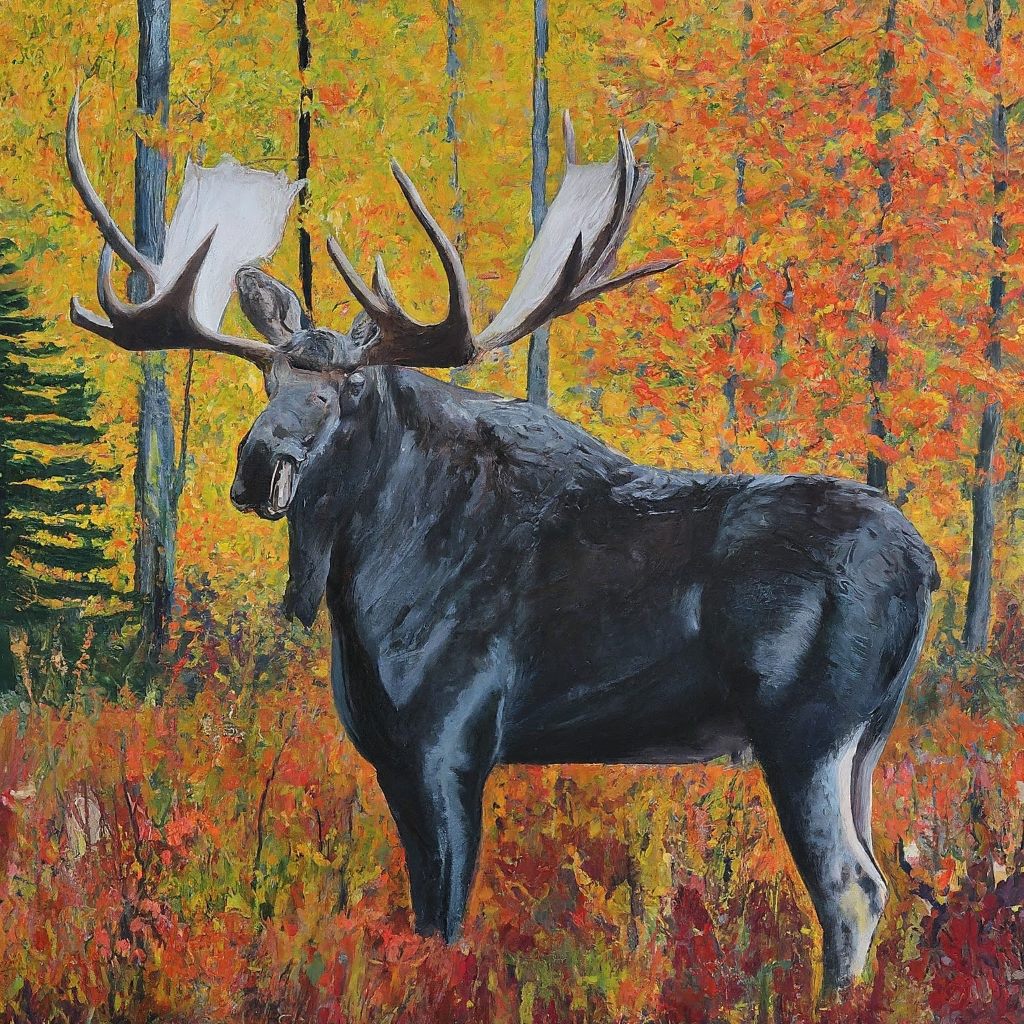
11. Moose (Alces alces)
The Moose is the largest extant species in the deer family, found in forested areas of North America, Europe, and Asia. It is characterized by its massive size, long legs, broad muzzle, and palmate antlers, which are unique among deer species. The Moose has a dark brown coat, often with lighter patches on its shoulders and legs, providing excellent camouflage in its forest habitat. Despite its size, the Moose is a skilled swimmer and often feeds on aquatic vegetation, such as water lilies and aquatic grasses, in addition to browsing on terrestrial plants.
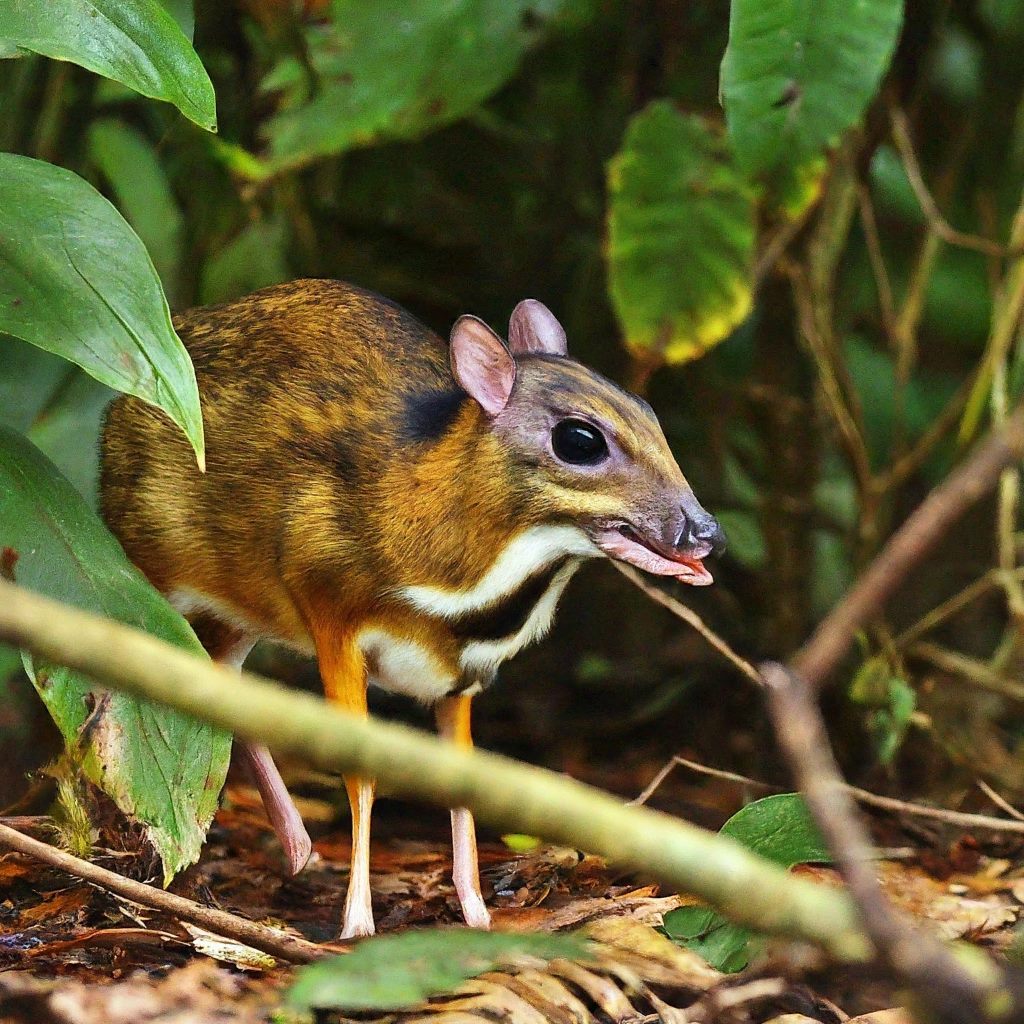
12. Mouse Deer/Chevrotain
The Mouse Deer, also known as the chevrotain, is a group of small ungulates found in forests and scrublands of South and Southeast Asia and Africa. Despite their name, mouse deer are not true deer but are instead classified in their own family, Tragulidae. They are characterized by their small size, slender legs, and pointed snouts. Mouse deer have short, simple horns or elongated canine teeth in males, which are used in territorial disputes or mating rituals. They are primarily nocturnal and feed on leaves, fruits, and other plant materials.
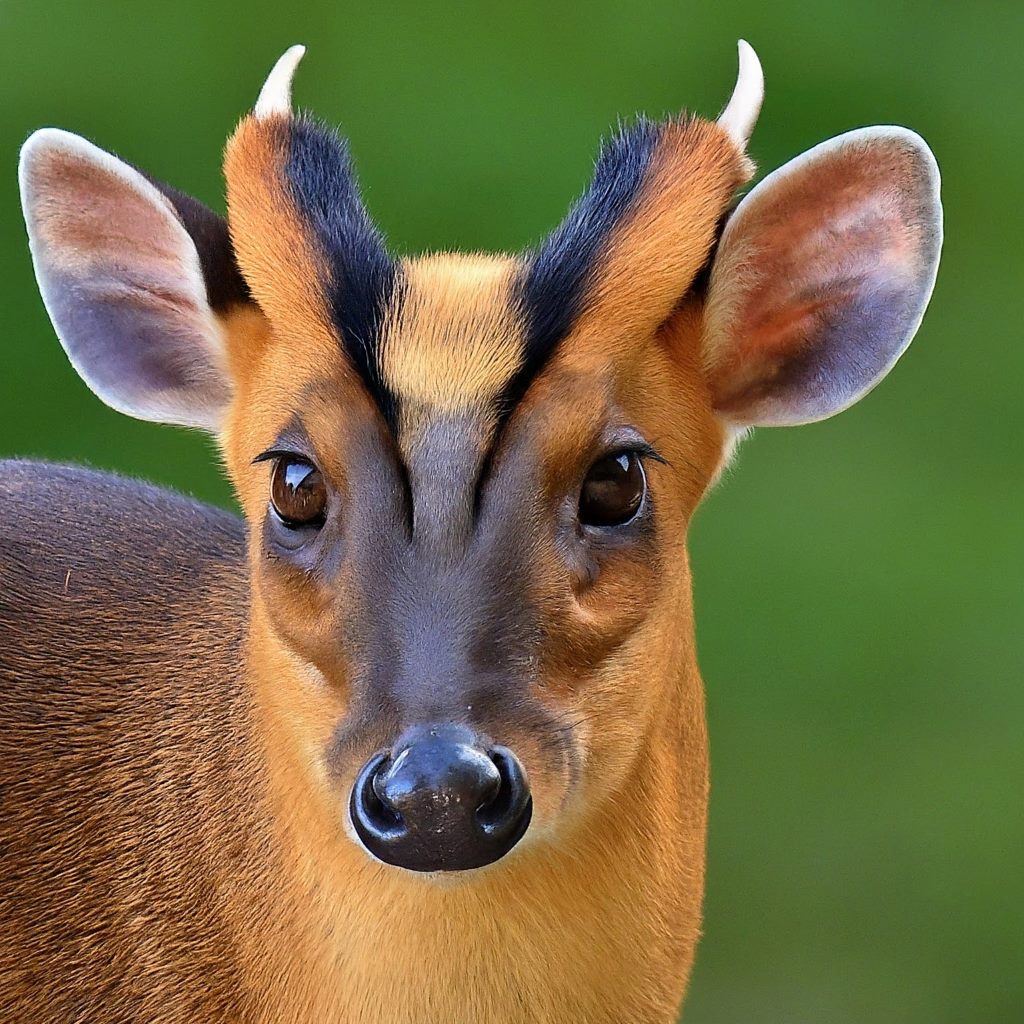
13. Muntjac
Muntjacs, also known as barking deer, are a group of small deer species found in South and Southeast Asia. They are characterized by their short stature, reddish-brown coat, and prominent canine teeth in males, which resemble tusks. Muntjacs have a distinctive bark-like call, which gives them their nickname. They inhabit forests and scrublands, where they feed on a variety of plant materials, including leaves, fruits, and buds. Muntjacs are solitary or form small family groups, and they are known for their secretive nature and excellent camouflage.
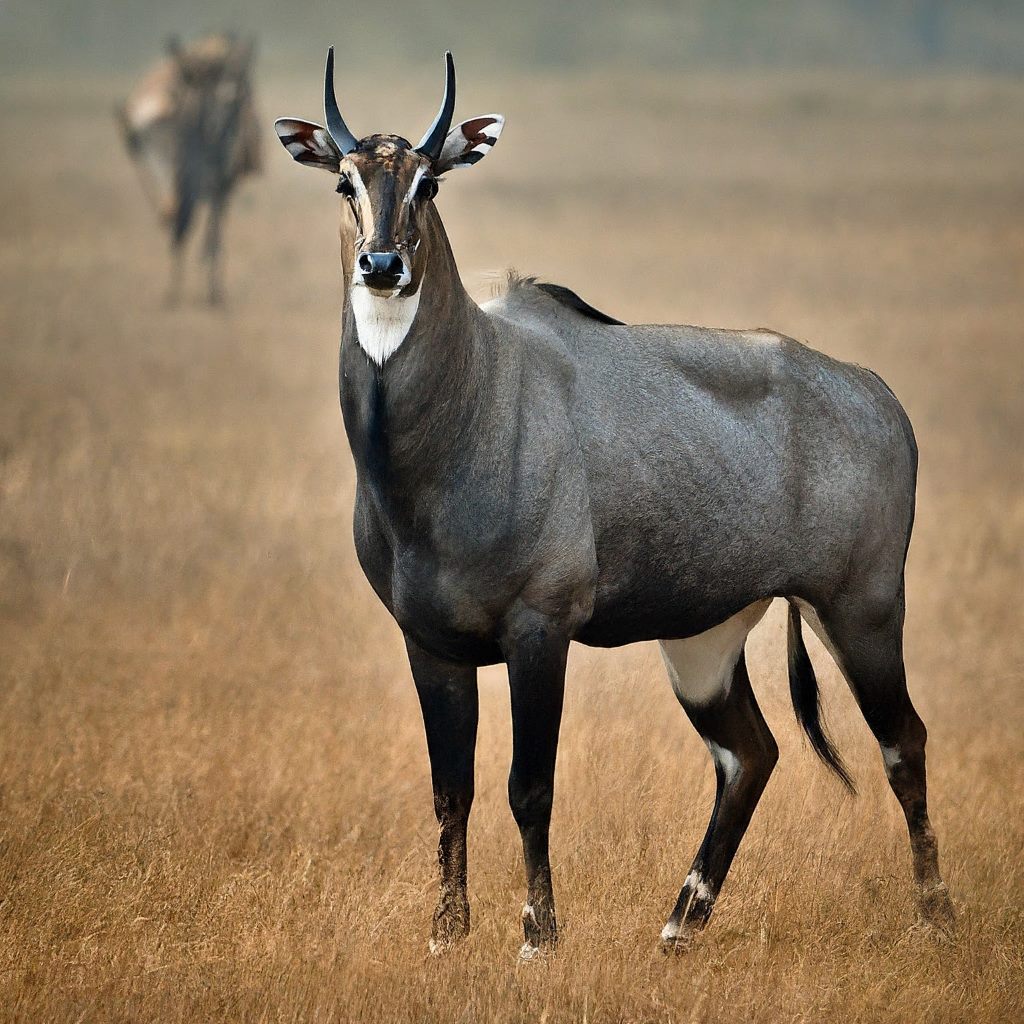
14. Nilgai (Boselaphus tragocamelus)
The Nilgai, also known as the blue bull, is a large antelope species found in the Indian subcontinent. It is characterized by its bluish-gray coat, short mane, and long, pointed horns in males. Nilgais inhabit grasslands, scrublands, and forests, where they feed on grasses, herbs, and shrubs. They are primarily diurnal and are known for their alertness and agility, making them difficult prey for predators. Nilgais are social animals and often form herds consisting of females and young males, while older males are solitary or form bachelor groups.
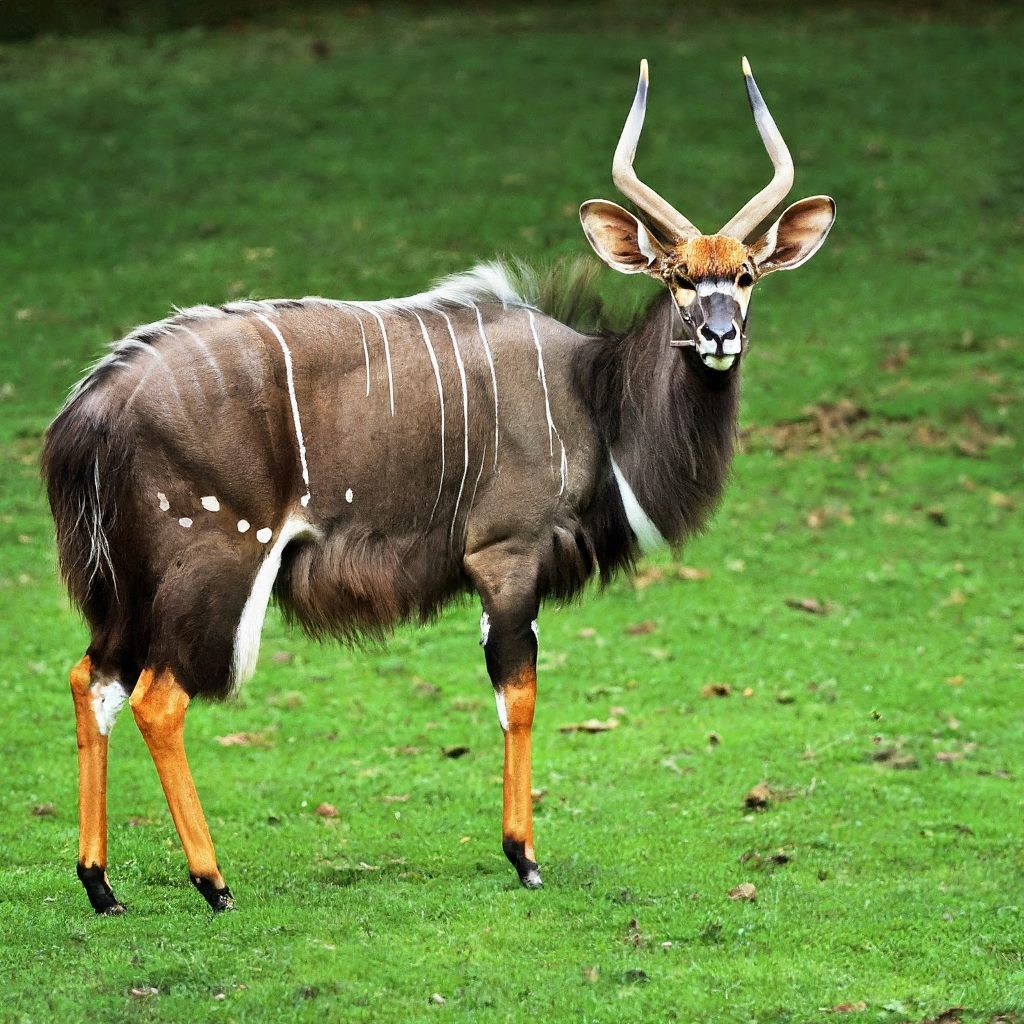
15. Nyala (Tragelaphus angasii)
The Nyala is a species of antelope found in southern Africa, particularly in dense woodlands and savannas. It is recognized for its striking appearance, with a dark brown coat marked by white stripes and spots, as well as spiral horns in males. Nyala inhabit areas with dense vegetation, where they feed on leaves, shoots, and fruits. They are primarily crepuscular and are known for their secretive nature, often retreating into dense cover when threatened. Nyala are sexually dimorphic, with males being larger and more brightly colored than females.
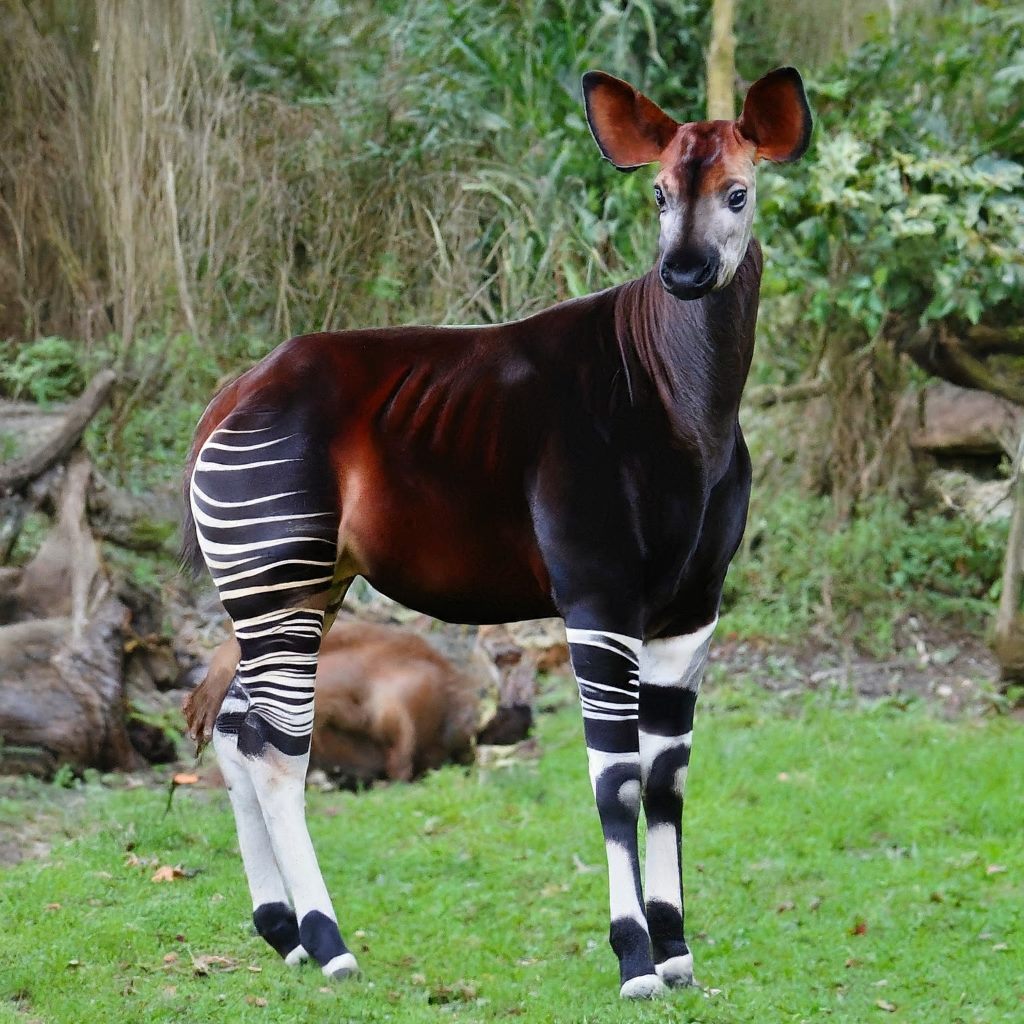
16. Okapi (Okapia johnstoni)
The Okapi is a fascinating creature native to the dense rainforests of the Democratic Republic of Congo in Central Africa. Although it is often referred to as the “forest giraffe” due to its long neck and striped legs, the Okapi is more closely related to the giraffe. However, it shares certain characteristics with deer, such as its reddish-brown coat and white stripes on its hindquarters. The Okapi also has short, ossicone-like horns on its head, resembling the antlers of certain deer species. It primarily feeds on leaves, buds, fruits, and fungi found in the forest understory, using its long tongue to strip leaves from branches.
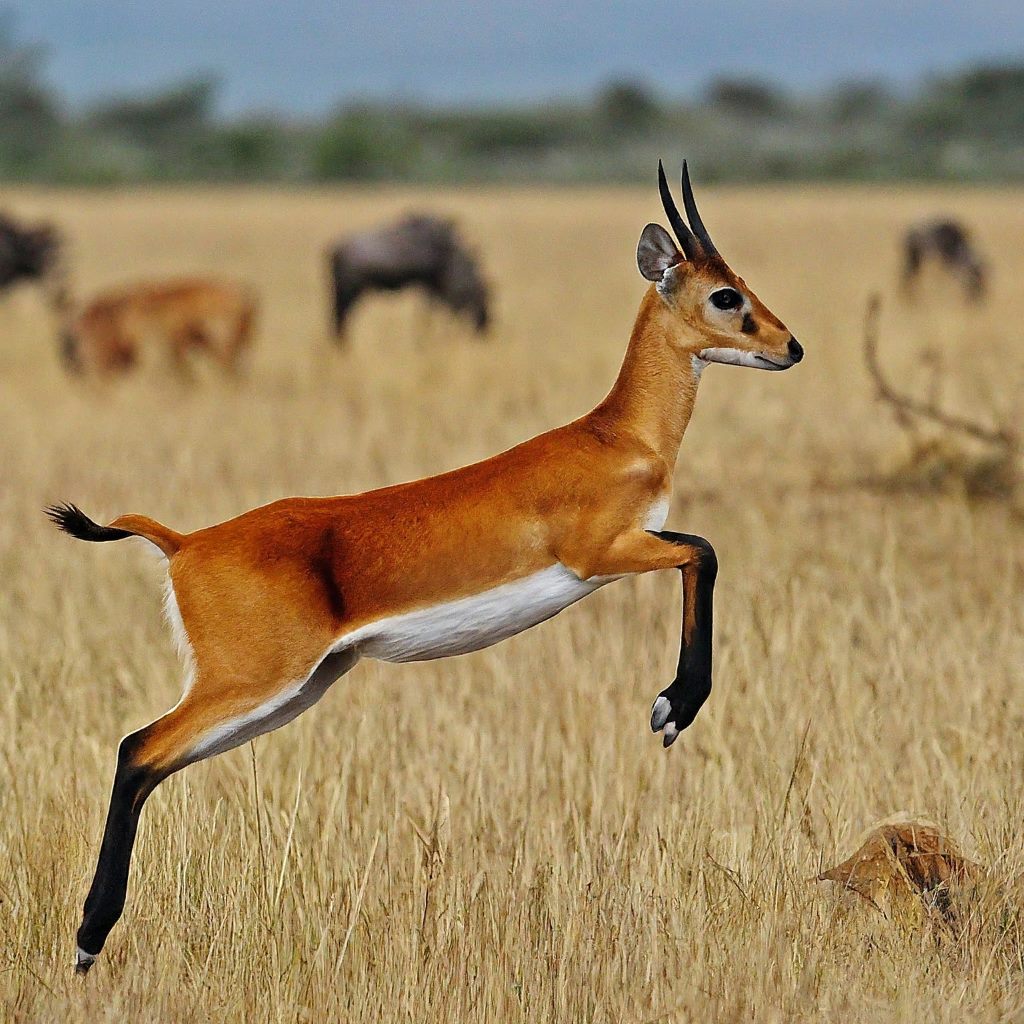
17. Oribi (Ourebia ourebi)
The Oribi is a small antelope species found in savannas and grasslands across sub-Saharan Africa. It is characterized by its slender build, reddish-brown coat, and distinctive black markings on its face and legs. The male Oribi has short, straight horns that curve slightly backward, resembling those of certain deer species. Oribis are agile runners and are known for their ability to escape predators by leaping and zigzagging through dense vegetation. They primarily feed on grasses and herbs, using their keen senses of sight and smell to detect potential threats.
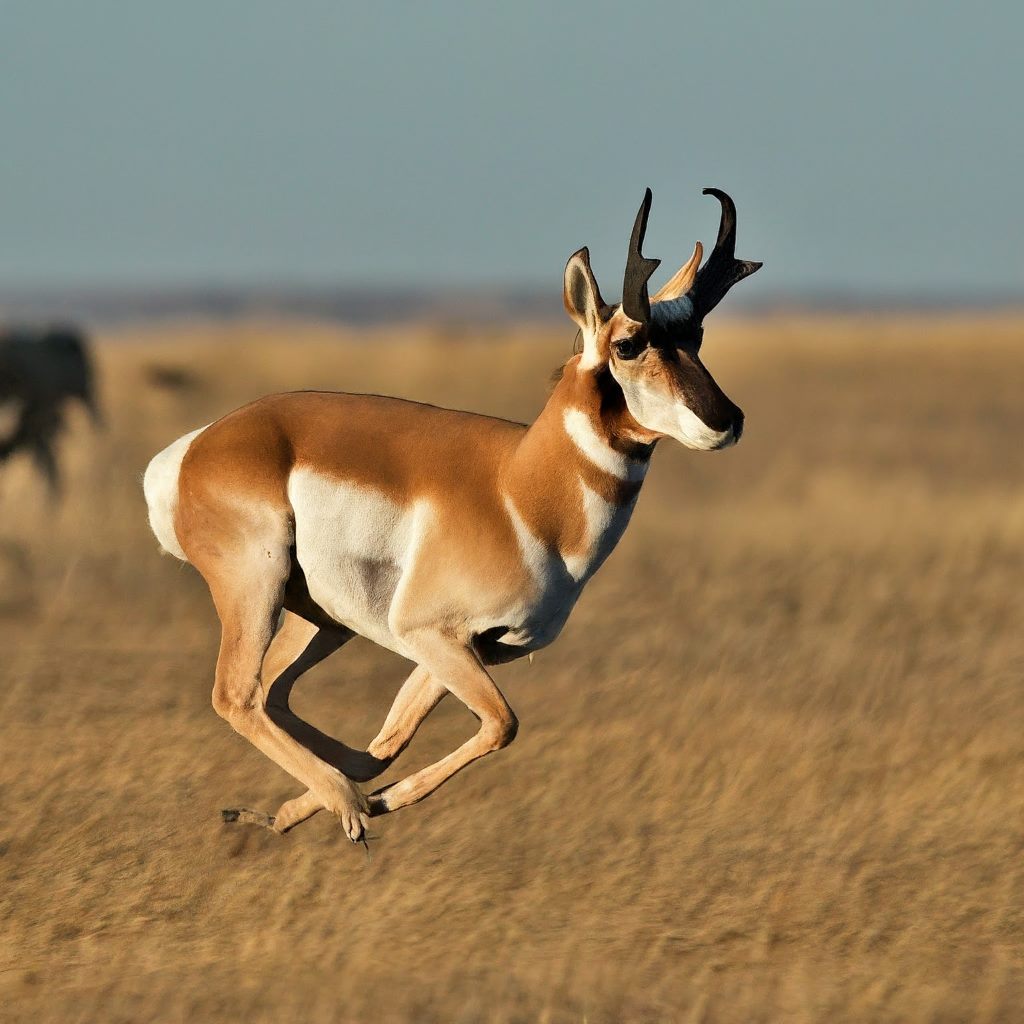
18. Pronghorn (Antilocapra americana)
The Pronghorn is a unique species of ungulate found in North America, particularly in the grasslands and deserts of the western United States and parts of Mexico. It is recognized for its slender build, tan-colored coat, and distinctive horns with prong-like branches. Despite its name, the Pronghorn is not closely related to antelopes or deer but belongs to its own taxonomic family. However, its graceful movements and agile running abilities bear resemblance to those of certain deer species. Pronghorns primarily feed on grasses, forbs, and shrubs, and they are known for their incredible speed, capable of reaching speeds of up to 55 miles per hour.
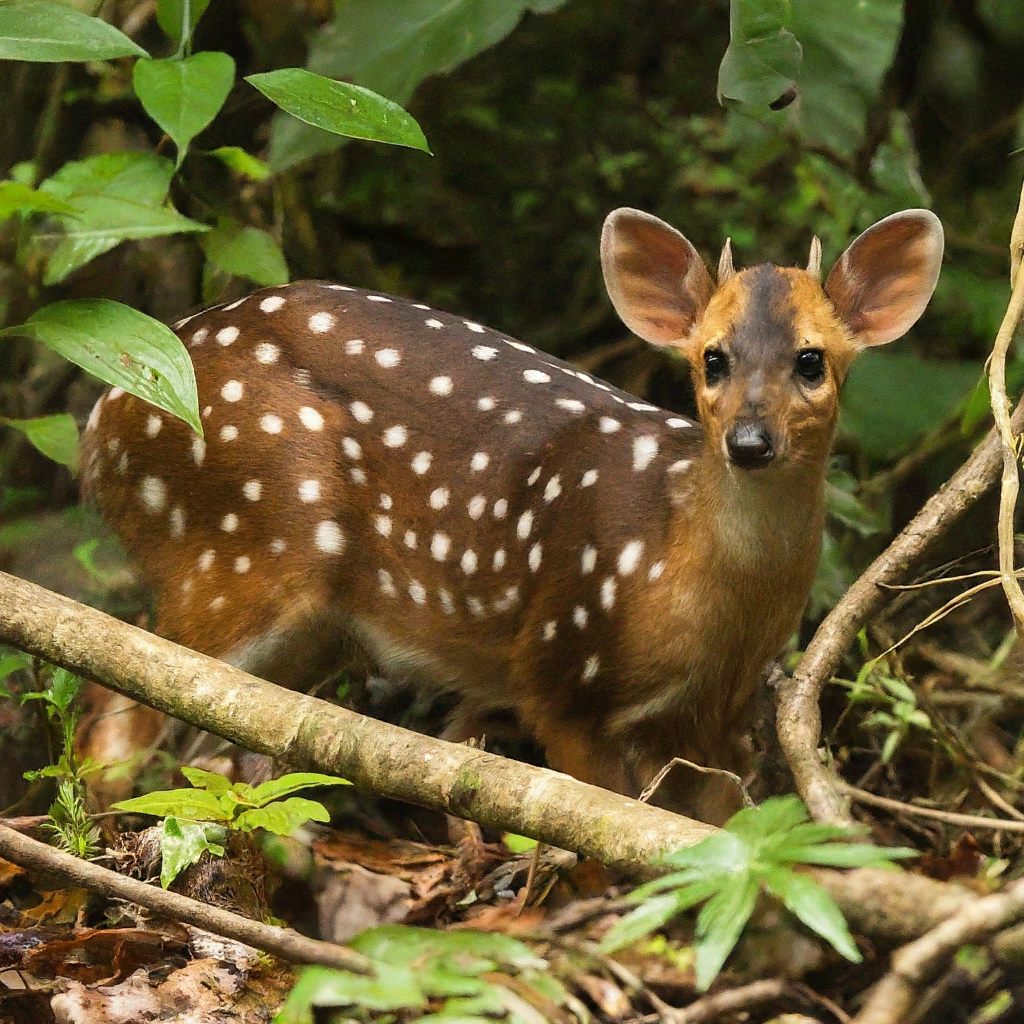
19. Pudu (Pudu)
The Pudu is the world’s smallest deer species, native to the temperate rainforests of South America, particularly in Chile and Argentina. It is characterized by its diminutive size, rounded ears, and reddish-brown coat. The Pudu has short, stubby antlers in males, which are shed and regrown annually. Despite its small stature, the Pudu is an adept climber and can navigate through dense vegetation with ease. It primarily feeds on leaves, shoots, fruits, and fungi found in the forest understory. The Pudu is known for its shy and elusive nature, making it challenging to observe in the wild.
20. Pygmy Brocket
The Pygmy Brocket is a small deer species found in the rainforests of South America, particularly in the Amazon Basin. It is characterized by its reddish-brown coat, slender build, and short, straight antlers in males. The Pygmy Brocket primarily feeds on leaves, fruits, and buds found in the forest understory, using its keen senses to detect potential threats. It is a solitary and elusive creature, often retreating into dense vegetation to avoid predators. Despite its small size, the Pygmy Brocket plays a vital role in its ecosystem as a seed disperser and herbivore.
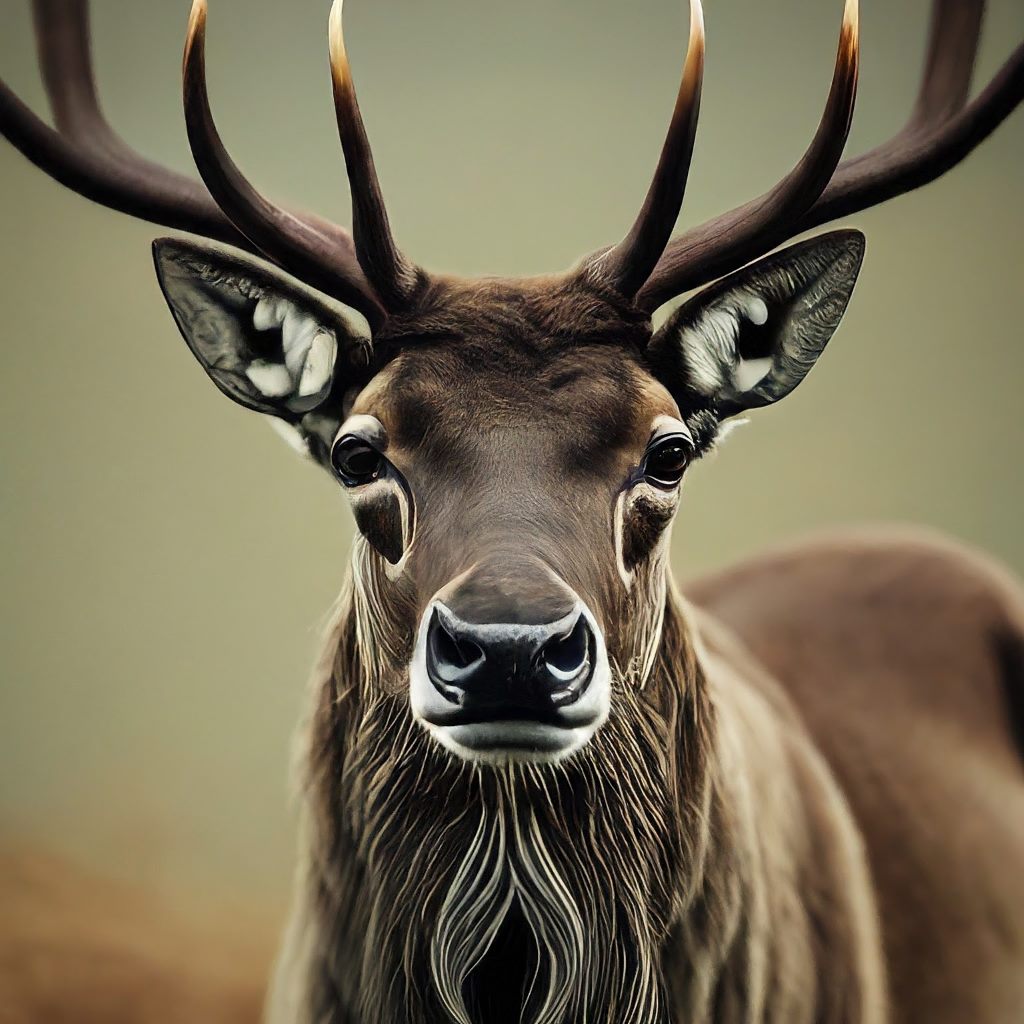
21. Reindeer (Rangifer tarandus)
The Reindeer, also known as caribou in North America, is a species of deer found in the Arctic and subarctic regions of North America, Europe, Asia, and Greenland. Reindeer are known for their distinctive antlers, which are large and branching in males and smaller or absent in females. They have thick, insulating coats that vary in color depending on the season, ranging from dark brown to grayish-white. Reindeer are well adapted to cold climates and are capable of surviving harsh winter conditions by foraging on lichens, mosses, grasses, and shrubs beneath the snow. They are also known for their long migrations, which can cover thousands of miles each year.
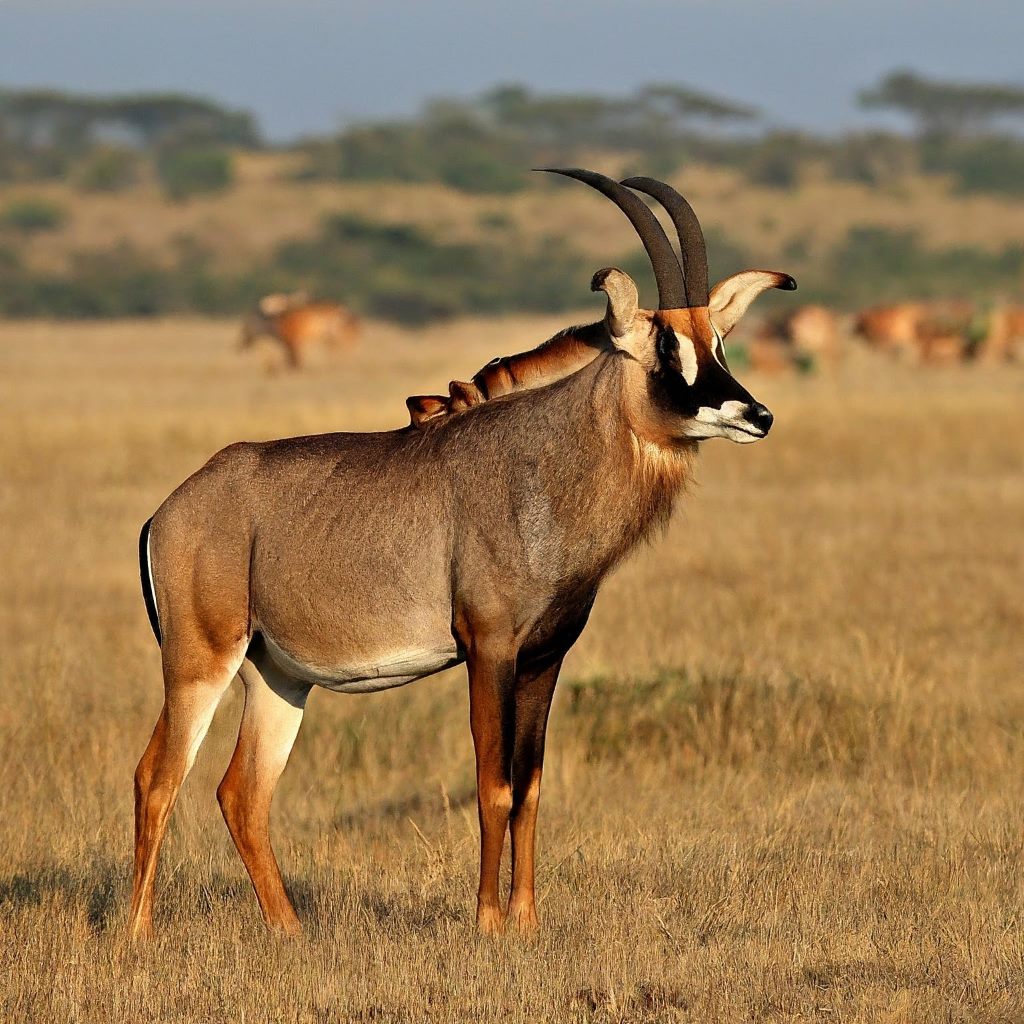
22. Roan Antelope (Hippotragus equinus)
The Roan Antelope is a large antelope species found in savannas and woodlands of sub-Saharan Africa. It is recognized for its robust build, reddish-brown coat, and distinctive facial markings, including white patches around the eyes and muzzle. The male Roan Antelope has long, slender horns that curve backward, reminiscent of those found on certain deer species. Roan Antelopes are grazers, feeding on a variety of grasses and herbs found in their habitat. They are social animals and often form small herds consisting of females and their offspring, while males may form bachelor groups or be solitary.
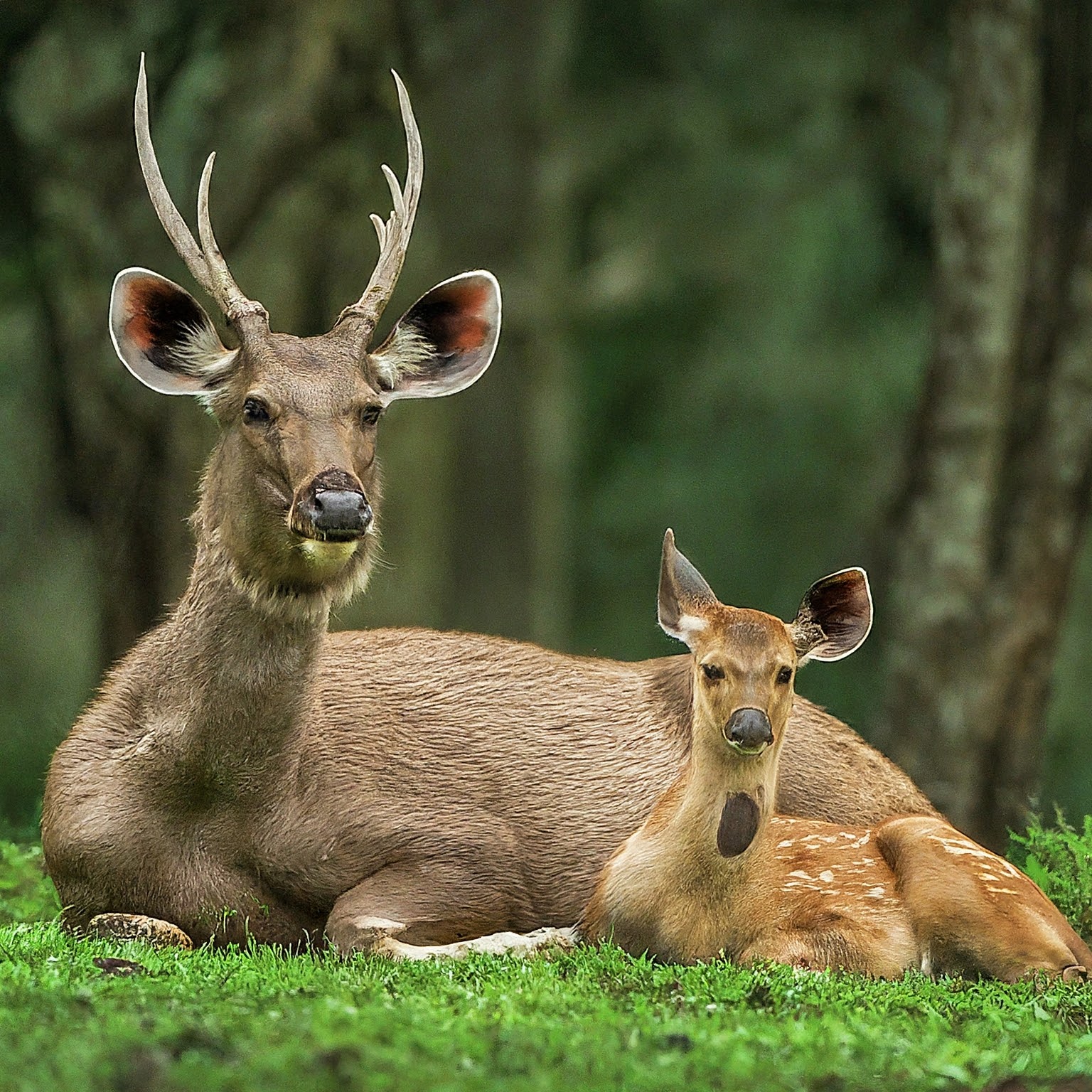
23. Sambar (Rusa unicolor)
The Sambar is a large deer species found in forests and grasslands of South and Southeast Asia. It is recognized for its robust build, dark brown coat, and distinctive white spots on its throat and underside. The male Sambar has impressive antlers with multiple tines, resembling those of certain deer species. Sambar are primarily browsers, feeding on leaves, shoots, fruits, and grasses found in their habitat. They are crepuscular animals, being most active during dawn and dusk, and are known for their vocalizations, including deep bellows and grunts.
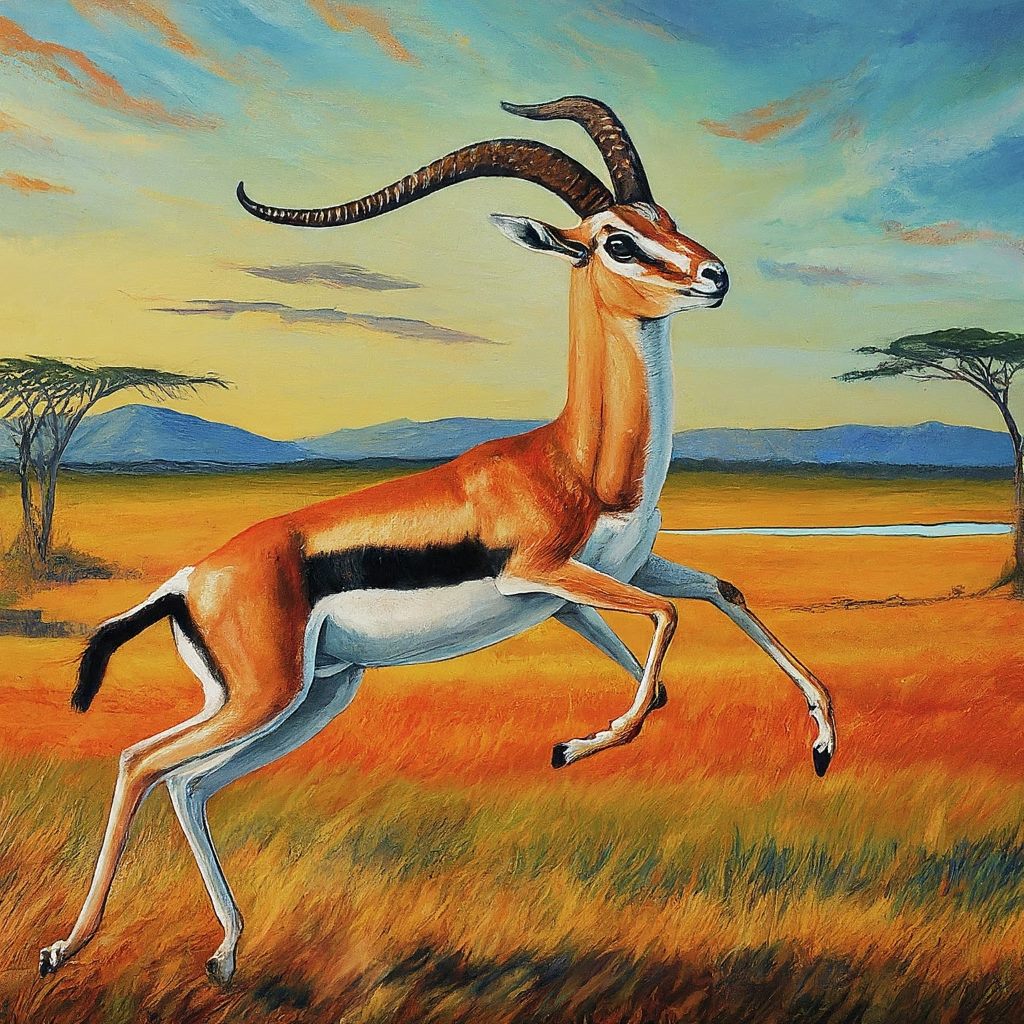
24. Speke’s Gazelle (Gazella spekei)
Speke’s Gazelle, also known as the Somali Gazelle, is a small antelope species found in the Horn of Africa, particularly in Somalia, Ethiopia, and Djibouti. It is characterized by its slender build, tan-colored coat, and distinctive white facial markings. The male Speke’s Gazelle has long, slender horns that curve backward, resembling those of certain deer species. Speke’s Gazelles inhabit arid and semi-arid habitats, where they feed on grasses, herbs, and shrubs. They are well adapted to desert environments and are capable of surviving extended periods without water.
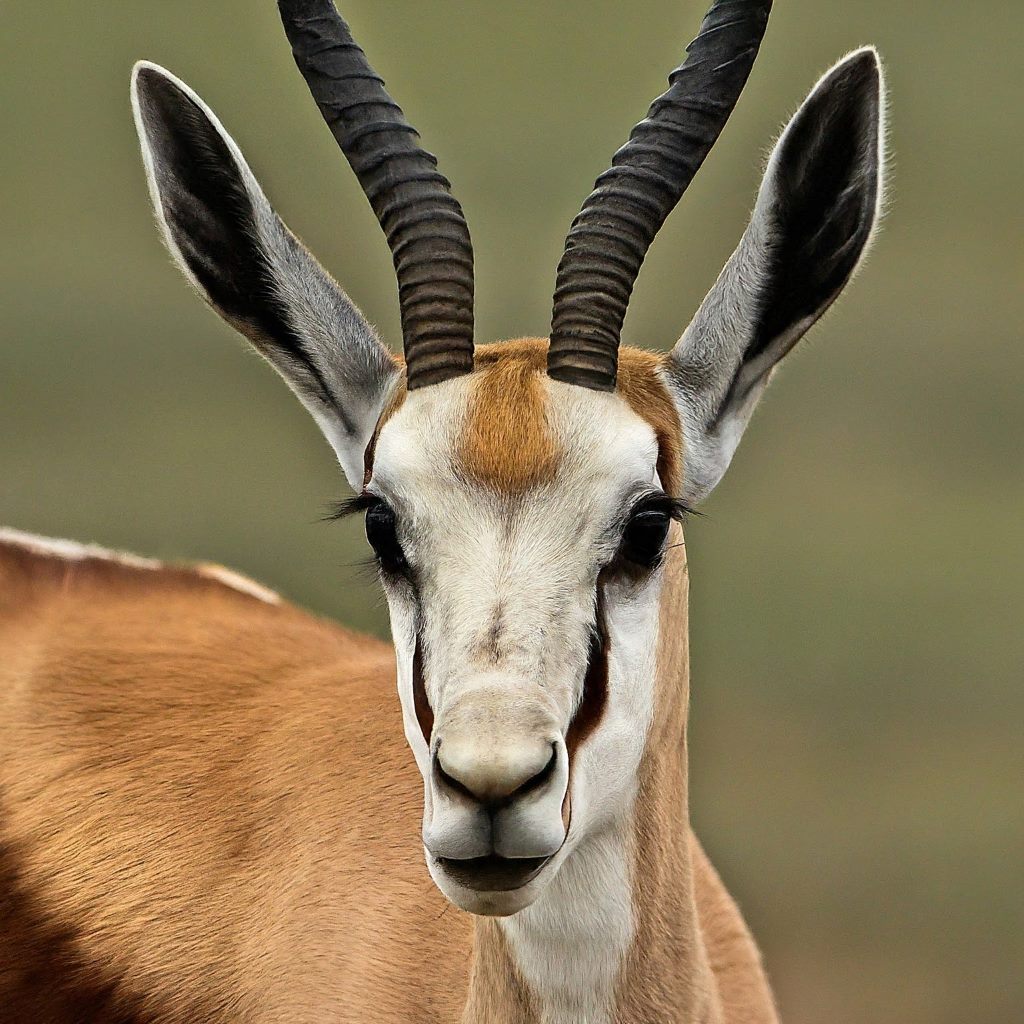
25. Springbok (Antidorcas marsupialis)
The Springbok is a small to medium-sized antelope species found in southern Africa, particularly in arid and semi-arid regions. It is recognized for its distinctive jumping behavior, in which it leaps high into the air with an arched back and stiff-legged posture, known as “pronking.” Springboks have a sleek, light brown coat with a white belly and a dark stripe running along their sides. Both males and females have slender, lyre-shaped horns that curve backward. Springboks primarily feed on grasses and herbs found in their habitat and are capable of surviving in harsh desert conditions.
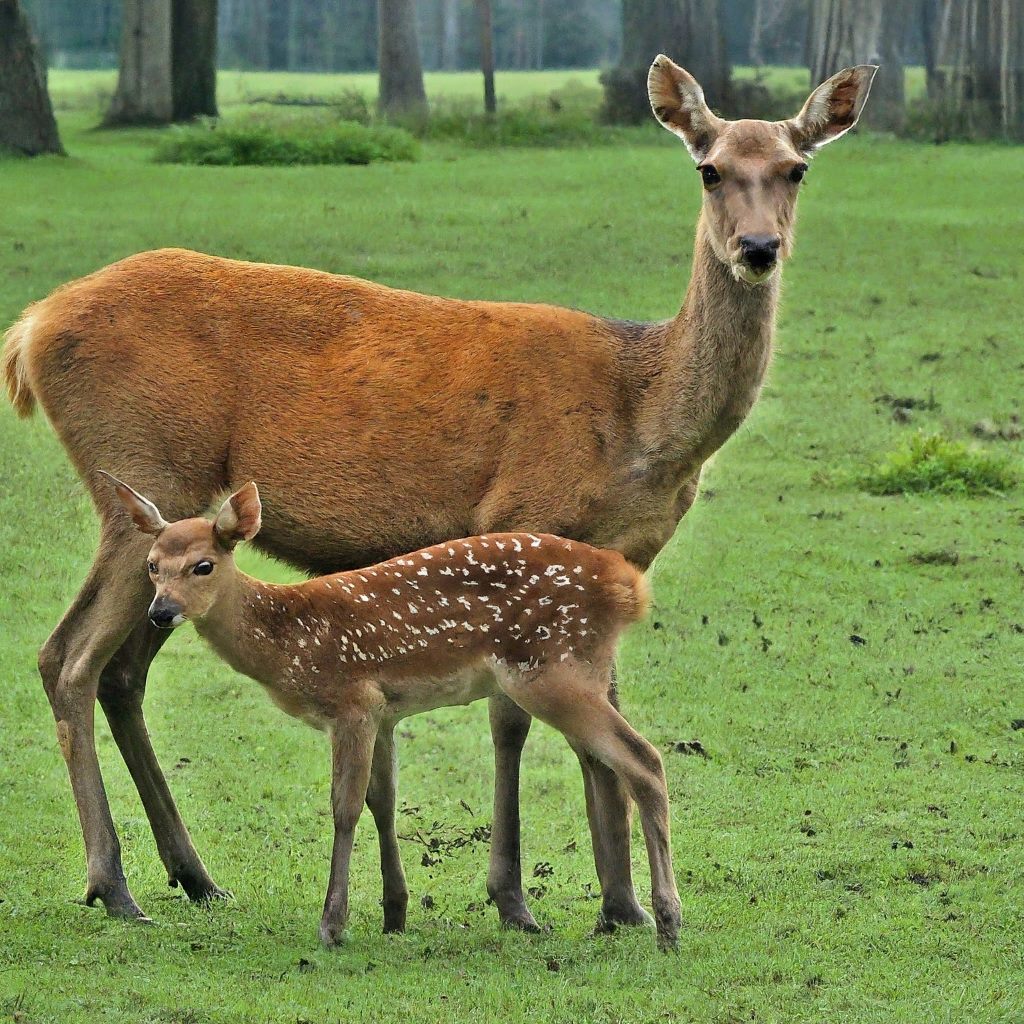
26. Suni (Neotragus moschatus)
The Suni is one of the smallest antelope species found in sub-Saharan Africa, particularly in dense forests and thickets. It is characterized by its tiny size, reddish-brown coat, and short, straight horns in males. Sunis are shy and elusive creatures, often retreating into dense vegetation to avoid detection by predators. They are primarily browsers, feeding on leaves, shoots, and fruits found in the forest understory. Despite their small stature, Sunis play a vital role in their ecosystem as seed dispersers and prey for larger predators.
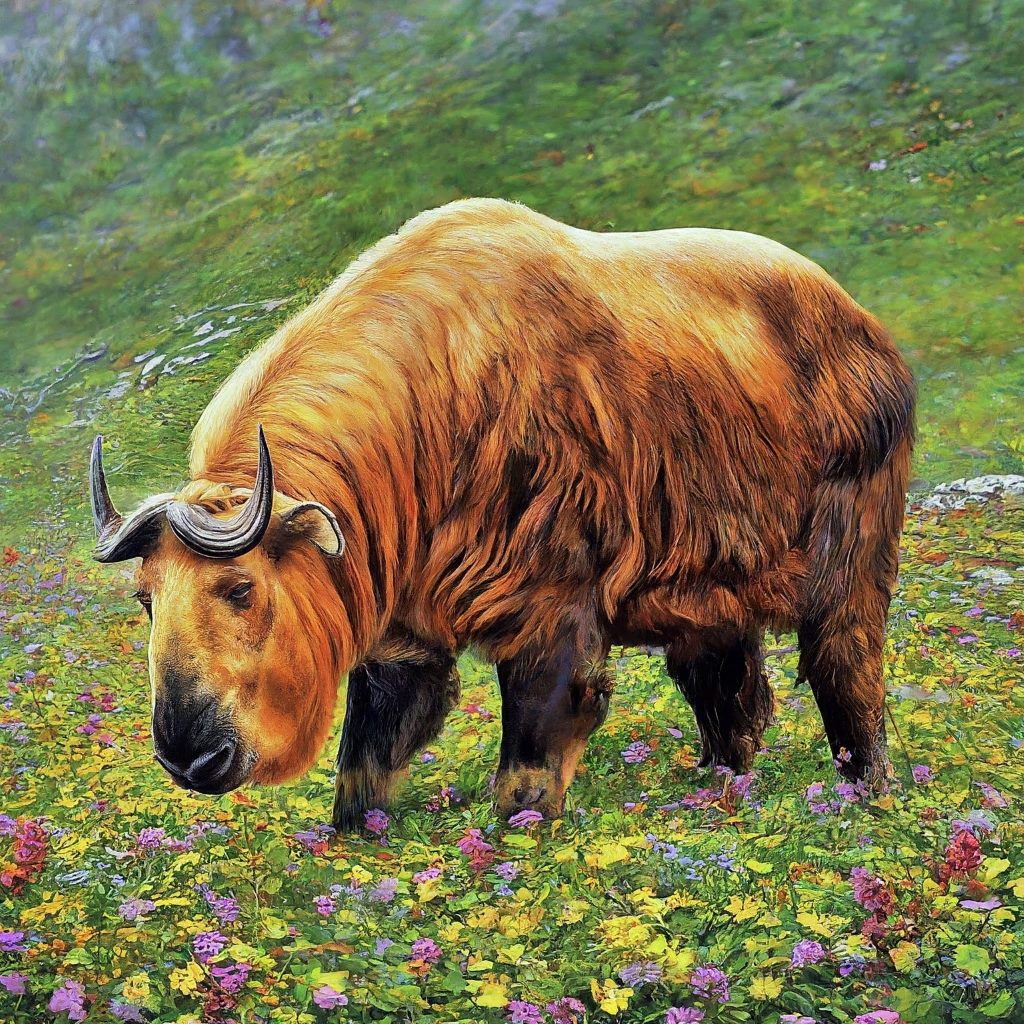
27. Takin (Budorcas taxicolor)
The Takin is a large ungulate species found in the Eastern Himalayas, particularly in Bhutan, China, and India. It is recognized for its stout build, shaggy coat, and distinctive nose bridge. The male Takin has large, thick horns that curve backward, resembling those of certain deer species. Takins inhabit mountainous regions with dense vegetation, where they feed on grasses, herbs, and shrubs. They are well adapted to cold climates and are capable of navigating steep cliffs and rocky terrain with ease. Takins are social animals and are often seen in small herds or family groups.
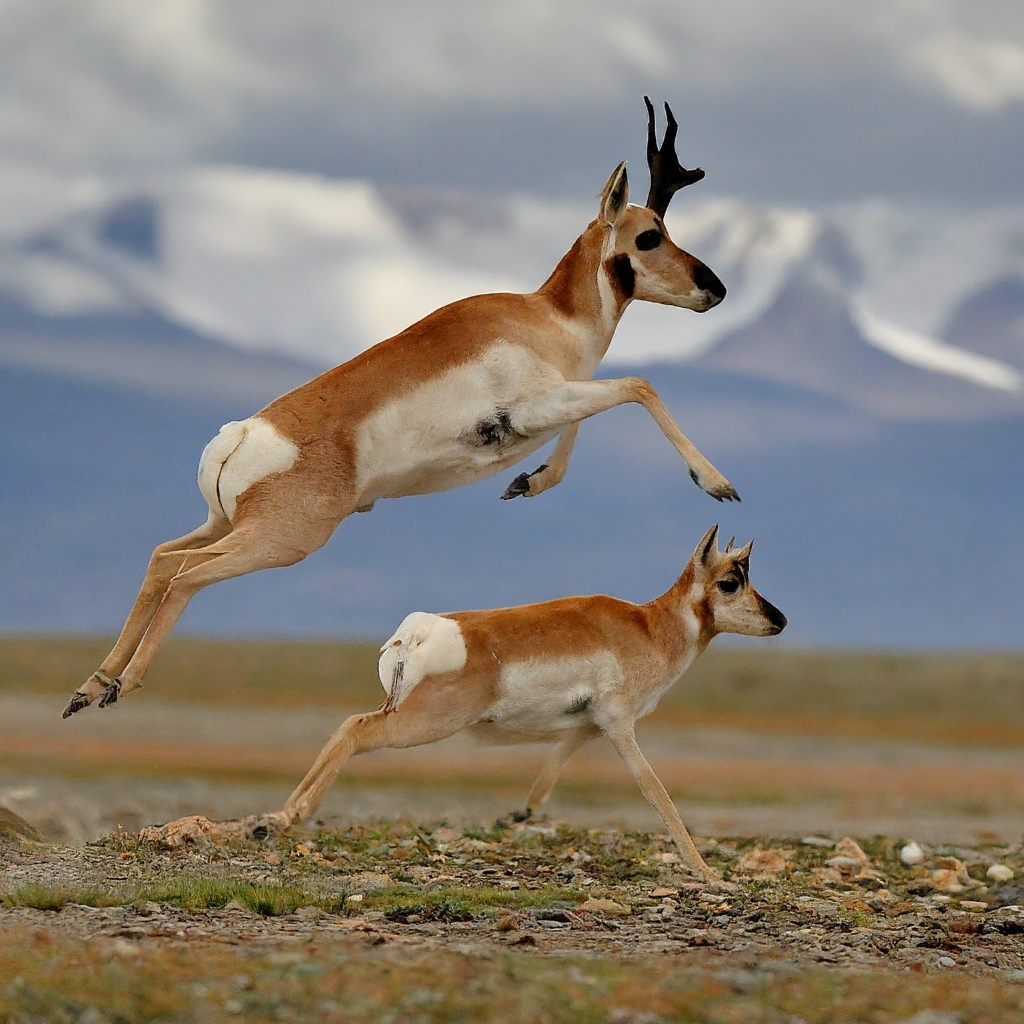
28. Tibetan Antelope (Pantholops hodgsonii)
The Tibetan Antelope, also known as the chiru, is a medium-sized antelope species found on the Tibetan Plateau in China and parts of India. It is recognized for its slender build, pale brown coat, and distinctive curved horns in males. Tibetan Antelopes inhabit high-altitude grasslands and steppe habitats, where they feed on grasses and herbs. They are well adapted to cold and windy conditions, with thick fur and a low metabolic rate to conserve energy. Tibetan Antelopes are known for their long migrations, covering vast distances in search of food and water.
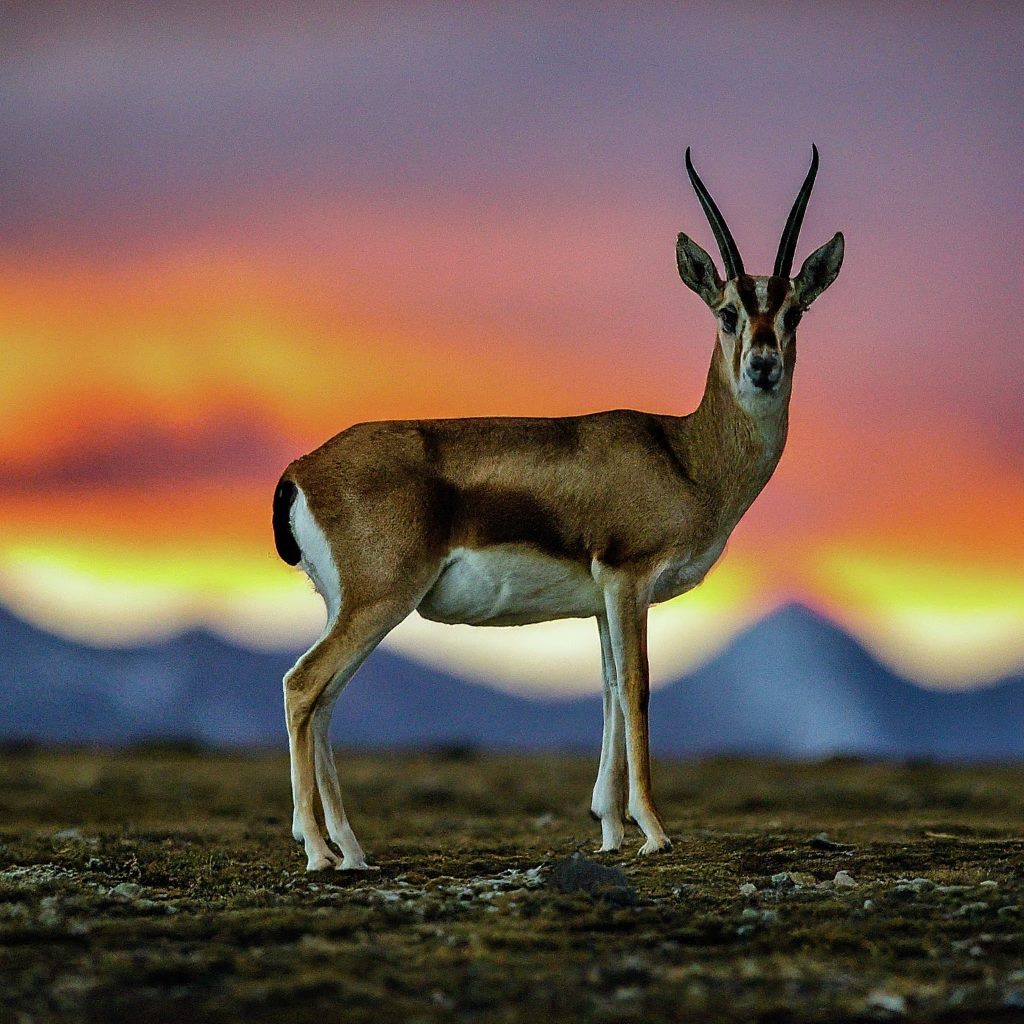
29. Tibetan Gazelle (Procapra picticaudata)
The Tibetan Gazelle is a small antelope species found in the Tibetan Plateau and surrounding areas in China and India. It is characterized by its slender build, pale brown coat, and distinctive white rump patch. The male Tibetan Gazelle has short, straight horns that curve slightly backward, resembling those of certain deer species. Tibetan Gazelles inhabit high-altitude grasslands and steppe habitats, where they feed on grasses, herbs, and shrubs. They are social animals and are often seen in small herds or family groups, grazing together in open areas.
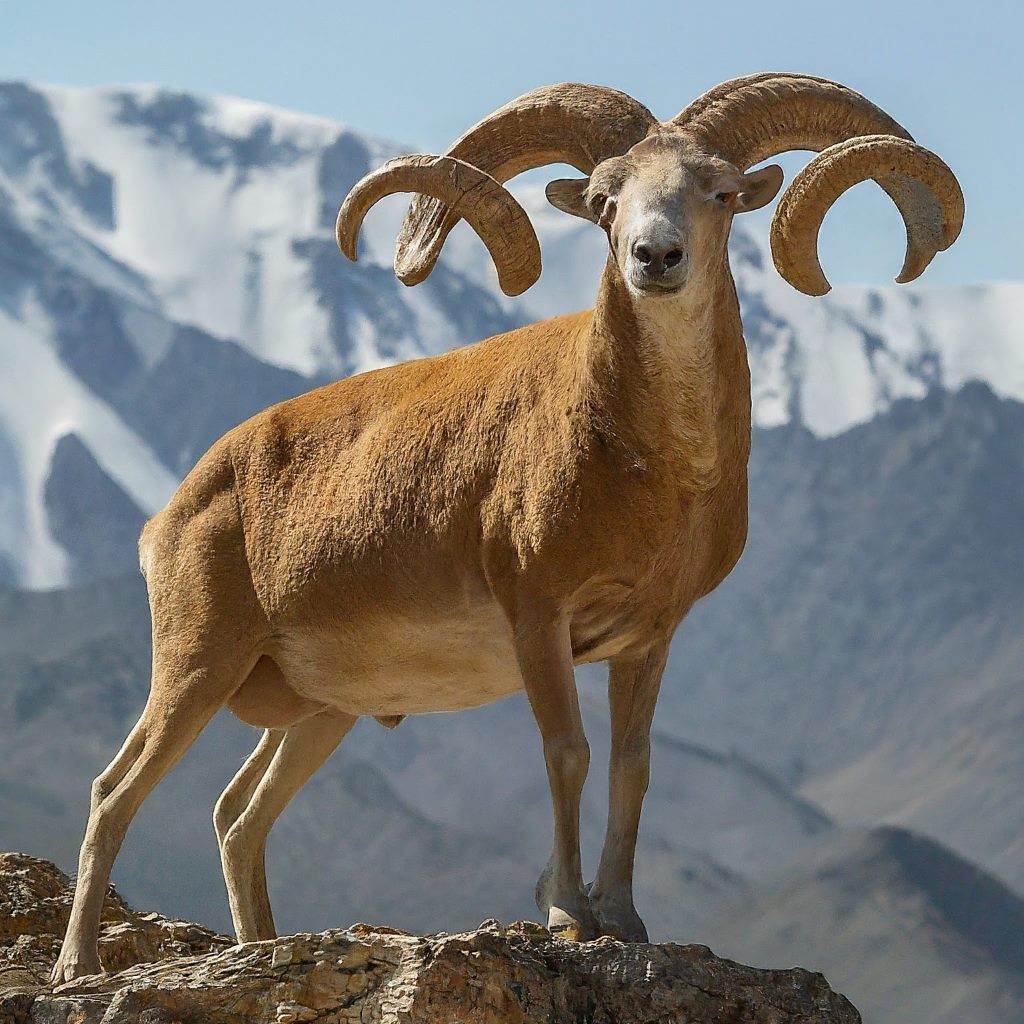
30. Urial (Ovis vignei)
The Urial is a medium-sized wild sheep species found in mountainous regions of Central Asia, particularly in Afghanistan, Pakistan, and India. It is recognized for its robust build, thick coat, and distinctive curled horns in males. The Urial inhabits rocky slopes and alpine meadows, where it grazes on grasses, herbs, and shrubs. It is well adapted to life in rugged terrain, capable of traversing steep cliffs and rocky outcrops. Urials are social animals and are often seen in small herds consisting of females and their offspring, while males may form bachelor groups or be solitary.
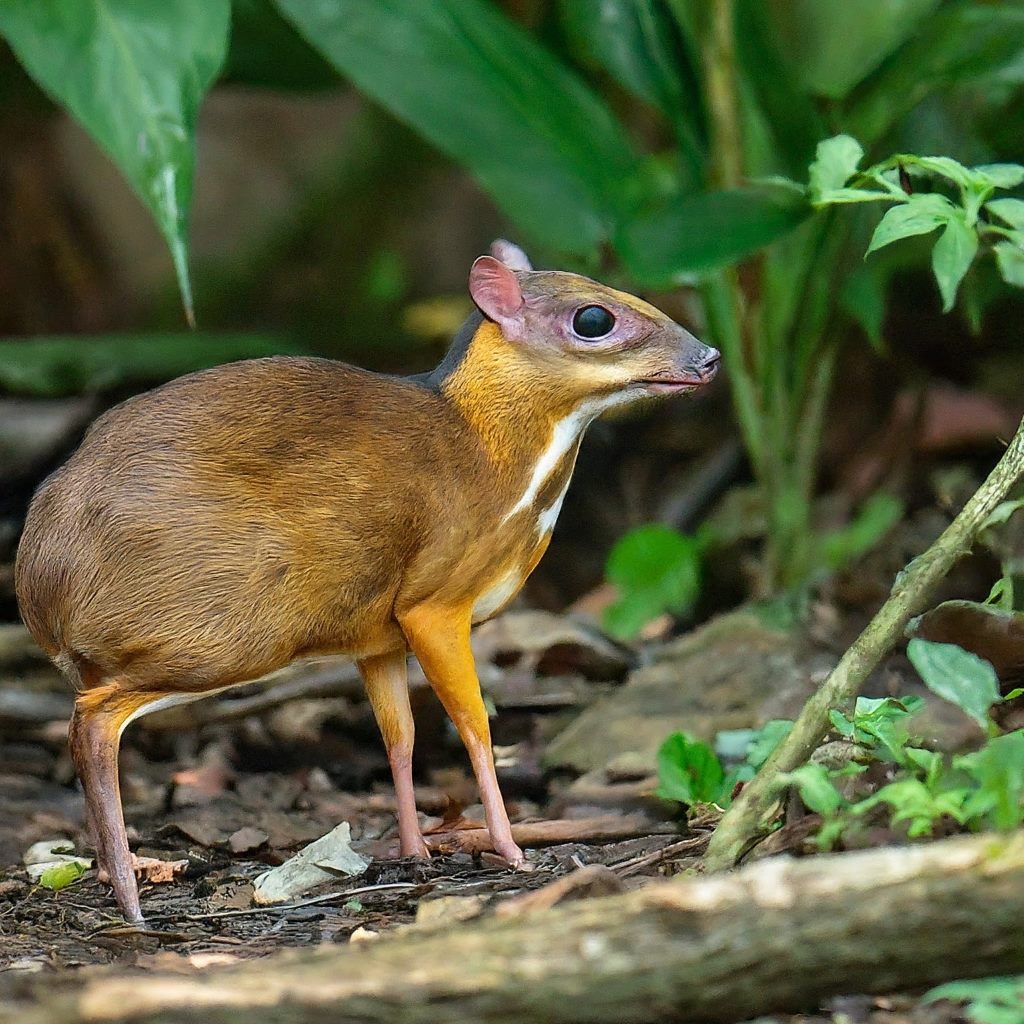
31. Vietnamese Mouse Deer (Tragulus versicolor)
The Vietnamese Mouse Deer, also known as the silver-backed chevrotain, is a small ungulate species found in the forests of Vietnam and Laos. It is recognized for its diminutive size, slender legs, and reddish-brown coat with a silver-gray stripe running along its back. The male Vietnamese Mouse Deer has short, pointed tusks in the lower jaw, which are used in territorial disputes or mating rituals. Vietnamese Mouse Deer are primarily nocturnal and feed on leaves, fruits, and other plant materials found in the forest understory. They are solitary creatures and are known for their secretive nature, making them difficult to observe in the wild.
Conclusion
In conclusion, while deer are a well-known and beloved group of animals, there are several other species that share similar characteristics or behaviors. From the elegant addax to the elusive nyala, each of these creatures offers a unique glimpse into the diversity of the animal kingdom. By exploring their physical attributes, habitats, and behaviors, we gain a deeper appreciation for the wonders of nature and the remarkable adaptations that allow these creatures to thrive in their respective environments. Whether roaming the savannas of Africa or the forests of North America, these deer-like animals continue to captivate and inspire us with their beauty and resilience.
Frequently Asked Questions (FAQs)
- What makes these animals similar to deer?
- These animals share certain physical characteristics with deer, such as slender legs, pointed snouts, and in some cases, impressive antlers or horns. Additionally, they may exhibit similar behaviors, such as grazing on vegetation or forming social groups.
- Are these animals closely related to deer?
- While some of these animals belong to the same family (e.g., antelopes, goats), others are classified in different taxonomic families or even orders. However, they may share common ancestors or have convergent evolution, resulting in similar traits.
- Do these animals have any unique adaptations?
- Yes, each species has evolved specific adaptations to suit its habitat and lifestyle. For example, the Gemsbok has specialized hooves for traversing arid landscapes, while the Moose has a unique antler structure for sparring with rivals during the mating season.
- What are the conservation status of these animals?
- The conservation status varies among these species, with some facing significant threats such as habitat loss, poaching, and human-wildlife conflict. Efforts are underway to protect and conserve these animals through habitat preservation, anti-poaching measures, and captive breeding programs.
- Where can these animals be found?
- These animals inhabit diverse habitats across different continents, including grasslands, forests, mountains, and deserts. Specific species may be restricted to certain regions, while others have wider distributions spanning multiple countries.
- Are any of these animals endangered?
- Yes, several species listed here are classified as endangered or vulnerable due to factors such as habitat destruction, overhunting, and climate change. Conservation efforts are essential to ensure the survival of these species and their ecosystems.
By addressing these common questions, we hope to provide a deeper understanding of the diverse array of animals that share similarities with deer. Each species has its own unique story and role in the natural world, contributing to the rich tapestry of life on Earth. Through conservation efforts and public awareness, we can work together to protect and preserve these magnificent creatures for future generations to appreciate and enjoy.
